Best high-end guitar amps 2025: Our pick of the best, for experts and pro players
Find the best premium guitar amps, heads and combos for rock, metal, blues and beyond
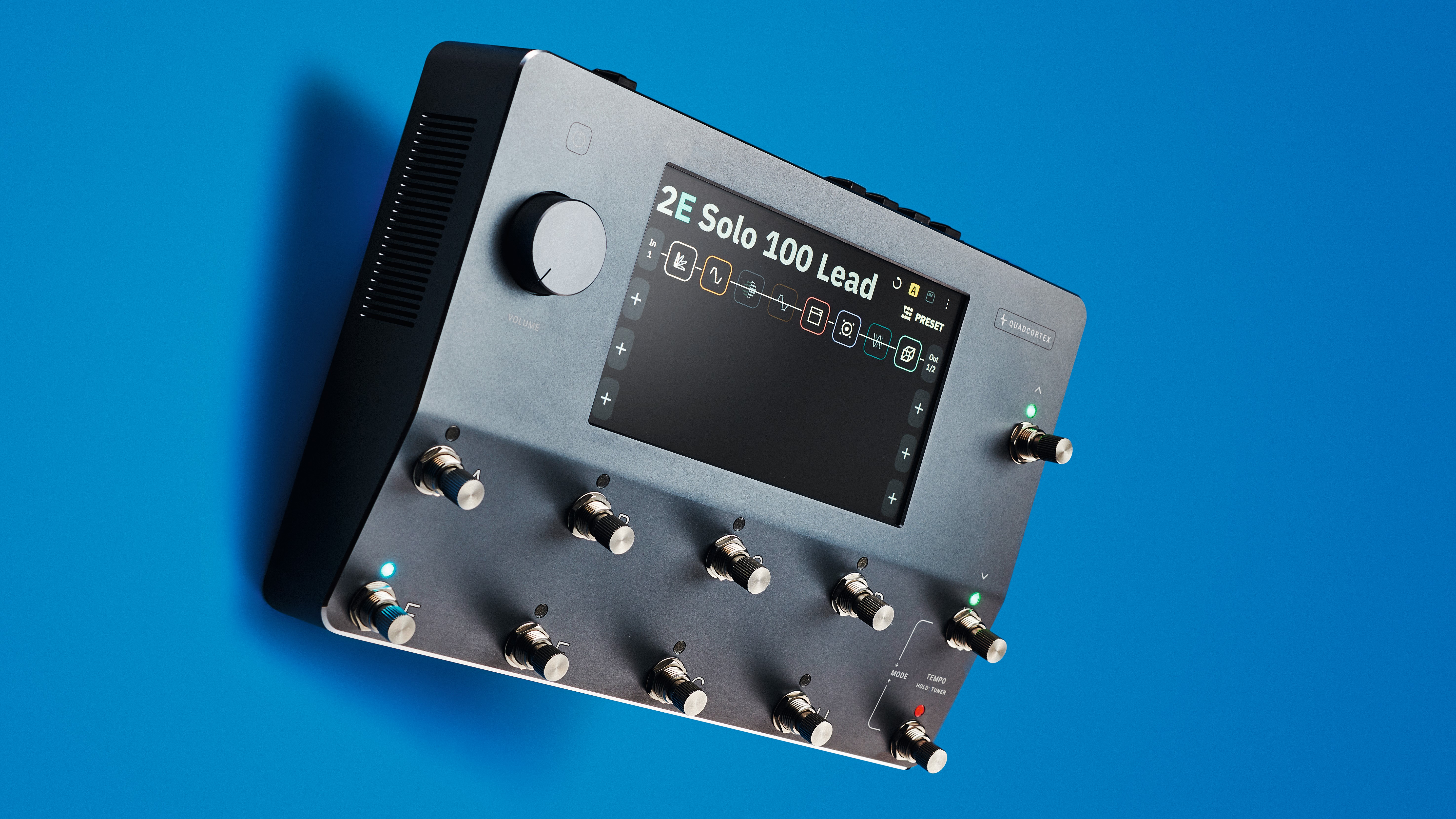
When you're about to spend big money on one of the best high-end guitar amps, you definitely want to know that you're investing your hard-earned money wisely in a box that will serve up truly killer tones for years to come. Whether your taste leads you towards the top mostly-clean combo amps, gain-focused hundred-watt heads or ultra-versatile amp modelling technology, there's something in the 'high-end' bracket that will suit your needs down to a tee.
The large majority of the amps in this guide are north of a grand. In this price bracket you can expect high wattages, top-notch build quality, and for the more tonally adventurous and technically adroit, advanced MIDI switching and effects loop capabilities, as well as power scaling for great tube/valve tone at any volume.
Whichever genre you favour, or whether you're looking for a recording studio monster or quality live mode one of the below high-scoring heads or combos is sure to fit the bill.
We've included some buying advice at the end of this guide, so if you'd like to read more about the best high-end guitar amps, click the link. If you'd rather get to the products, then keep scrolling.
Best high-end guitar amps: Our top picks
The nature of this product category dictates that basically every amp in this guide is a 'top pick'. These amps are the cream of the crop - the best of the best, if you will - but we still can't help but have our favourites.
When it comes overall versatility in the world of guitar amps, digital amp modelling is hard to beat - and it doesn't get any better than the Neural DSP Quad Cortex. As one of the industry's leading amp sim manufacturers, their ability to synthesise a world-endingly good guitar tone is incredible - and whether you want sparkly cleans or huge amounts of gain pouring into your ears, the QC does it all. And it's compact, too. If you're a travelling musician, or hugely limited when it comes to space, then this is the guitar amp to have.
For those who want a massive, powerful, all-tube head to move some serious air, you can't go wrong with the ultra-capable Mesa/Boogie Triple Crown TC-50. The Triple Crown is equipped with three preamps which take care of clean, low-gain and high-gain tones individually, and as a result, the quality of each tone this amp creates is sublime.
Best high-end guitar amps: Product guide
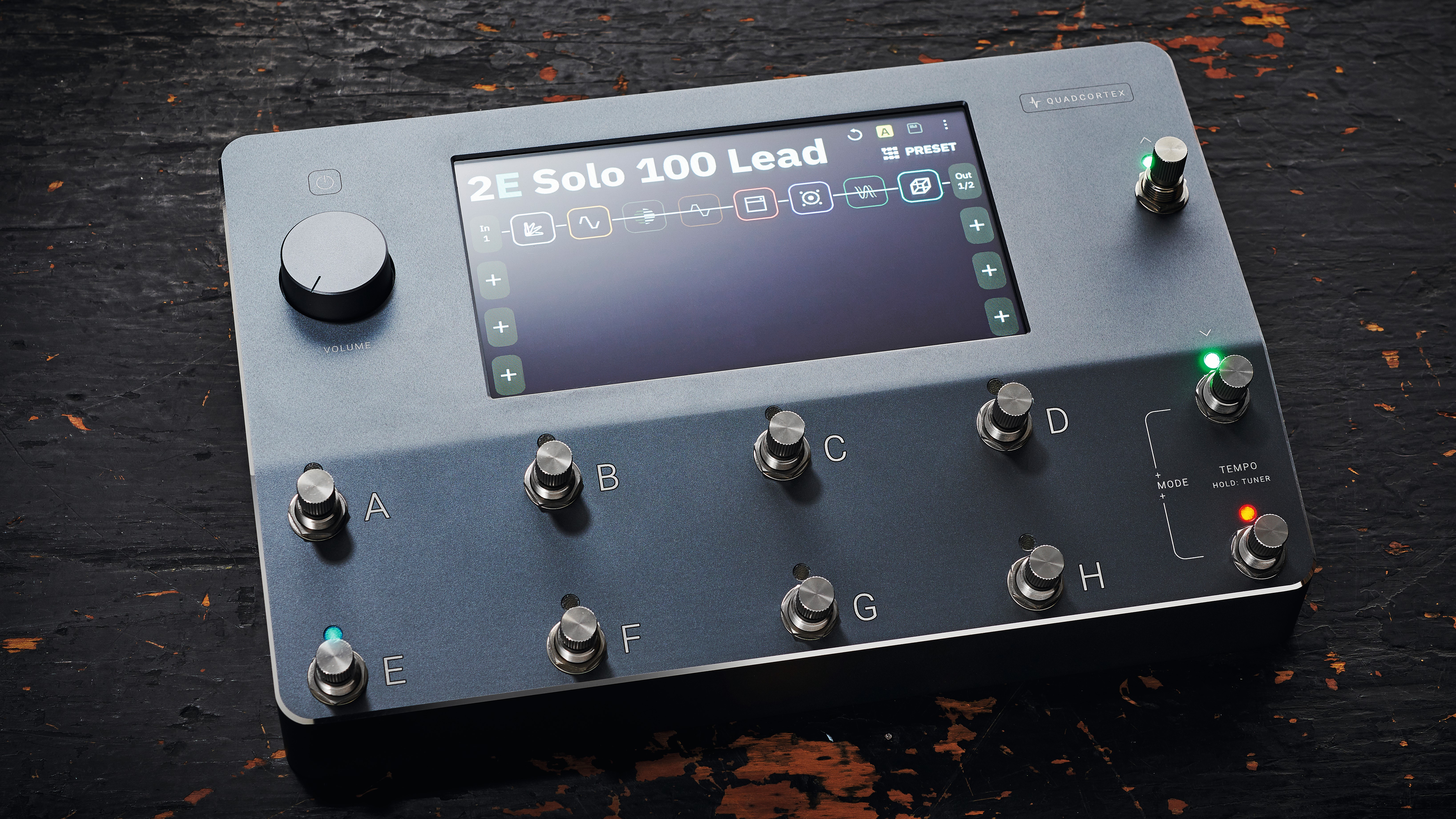
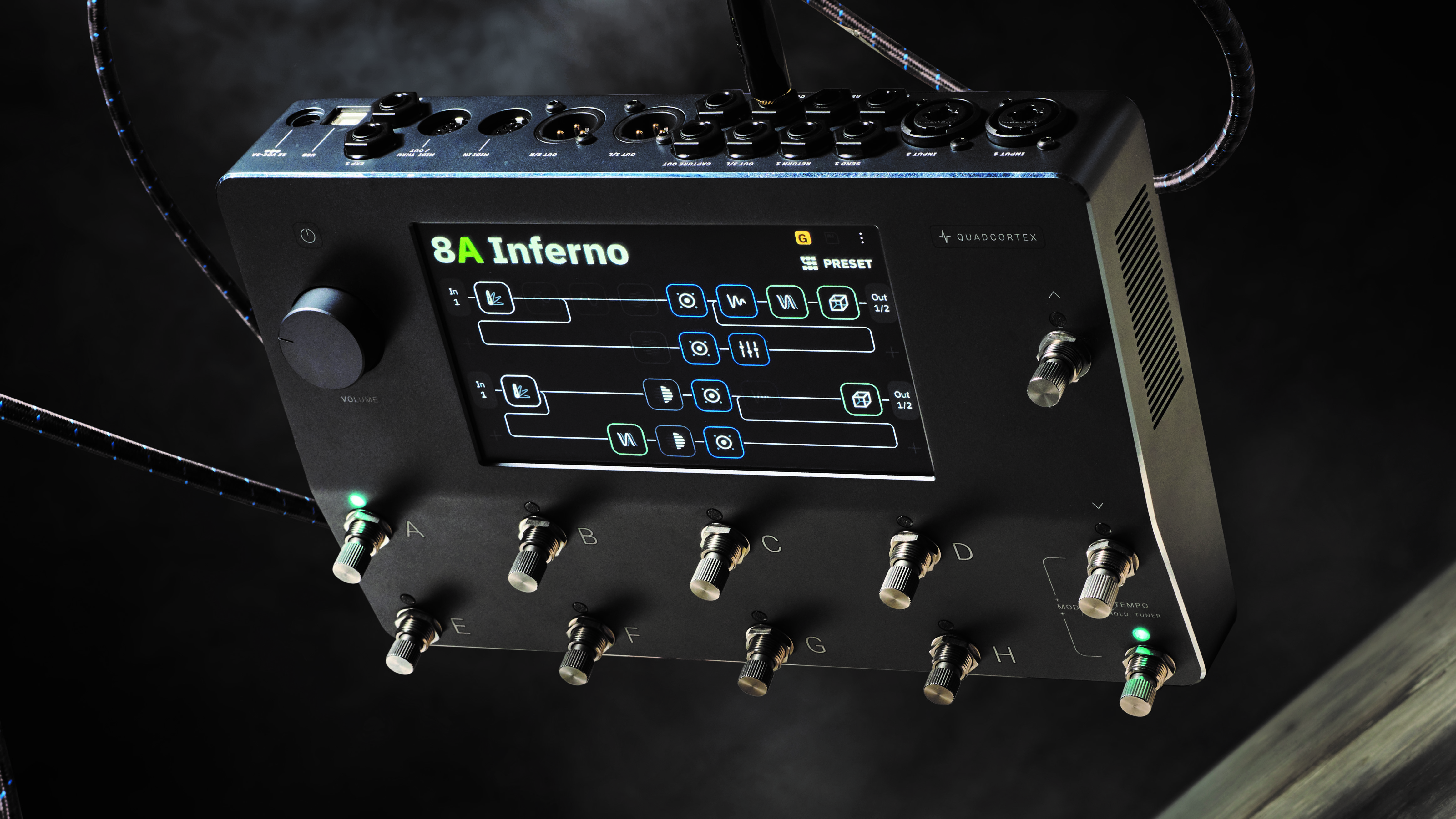
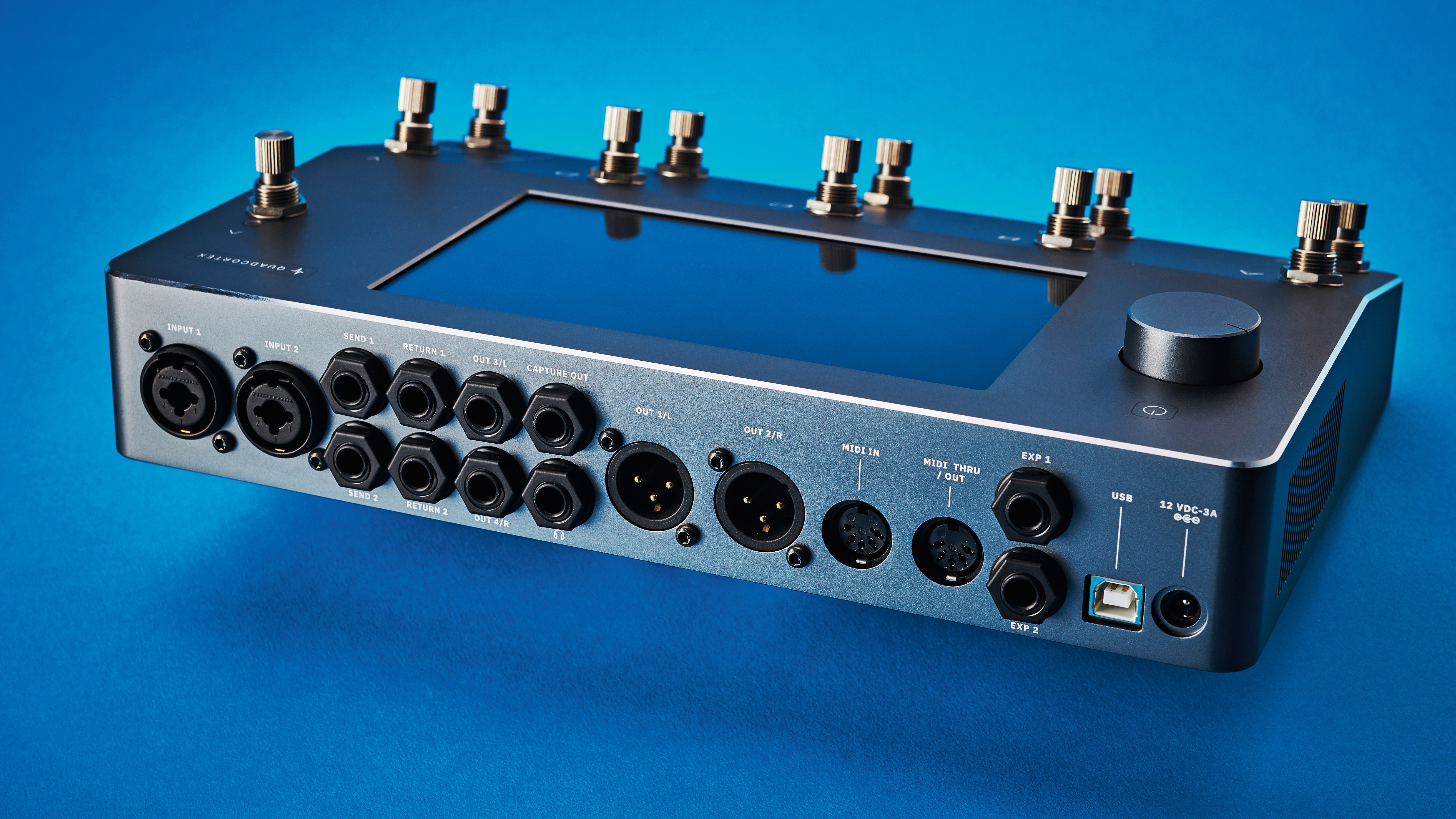
Specifications
Reasons to buy
Reasons to avoid
Neural DSP is one of the kings of the amp sim world right now. Their Archetype plugins are consistently used by guitarists of all styles and standards all over the world, with shining endorsements from artists such as Cory Wong, John Petrucci, Tim Henson, Adam 'Nolly' Getgood and more. Neural DSP has decided to put their exceptional amp modelling expertise into their first ever hardware unit - the Quad Cortex - and boy are we excited.
The QC has over 50 onboard amp models to choose from, as well as 1,000+ other amp algorithms tucked safely away in the sound library - meaning that a lack of choice will never be the thing that limits your playing or your creative flow state. The Quad Cortex also has over 70 effects and well over 1,000 impulse responses - so literally any tone you can think of is at your fingertips, from super-clean chicken-pickin' to gain tones that will make the ground shake.
It may sound like we've got nothing bad to say about the QC - but that's not the case. As far as amp modellers go, it's quite a tricky one to get the hang of - and we looked at the manual more times than our toxic masculinity would usually allow - but for the reward? Well, it was more than worth it.
Read the full Neural DSP Quad Cortex review
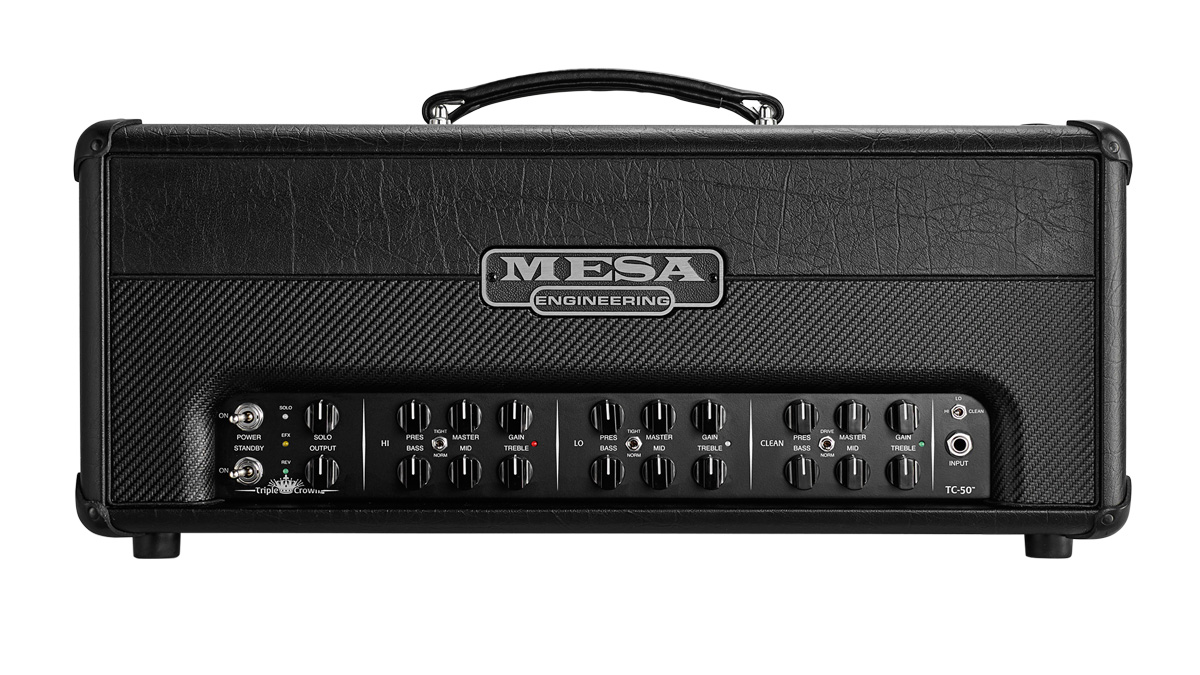
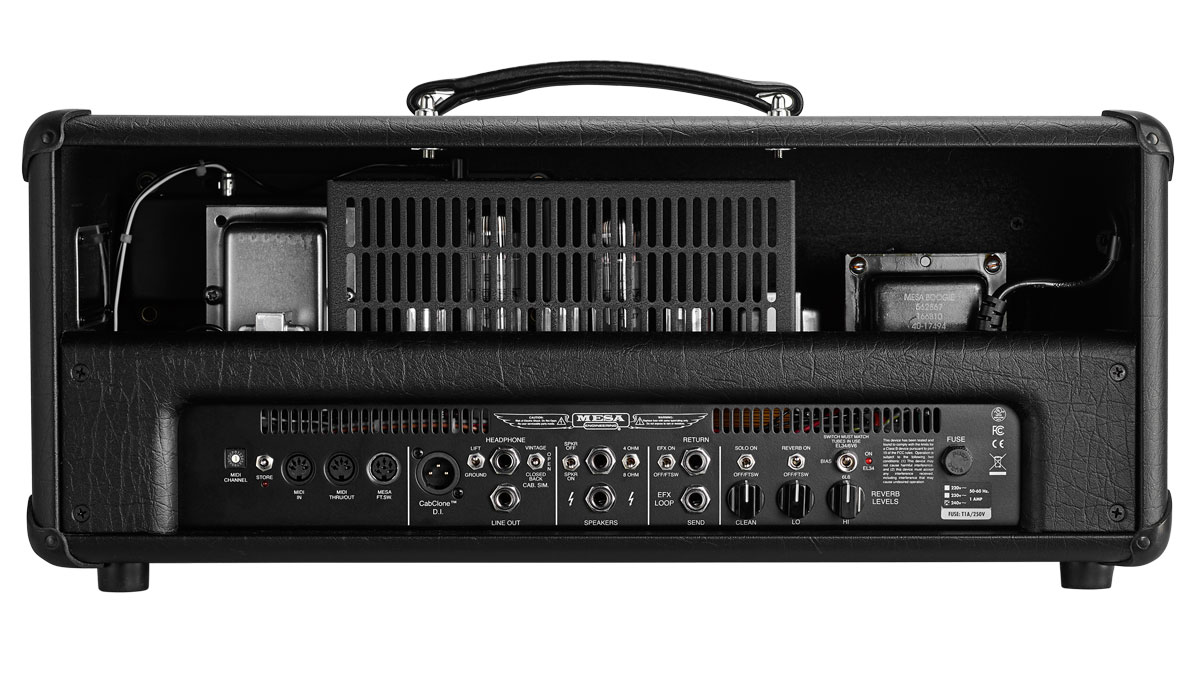
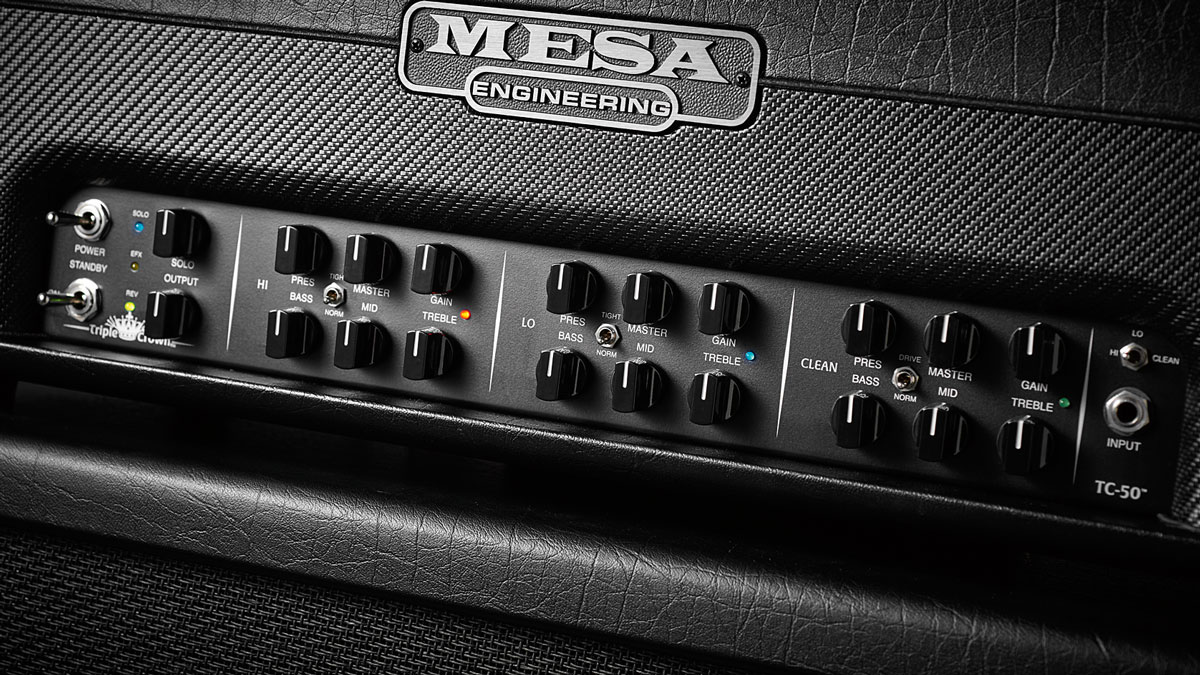
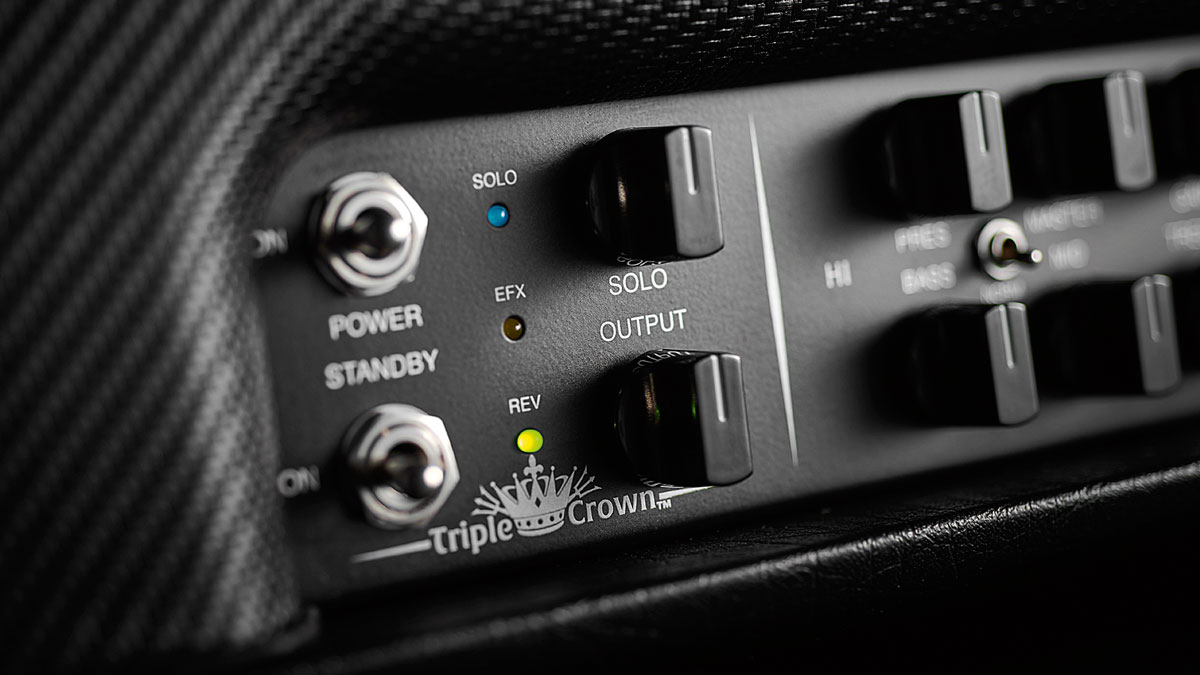
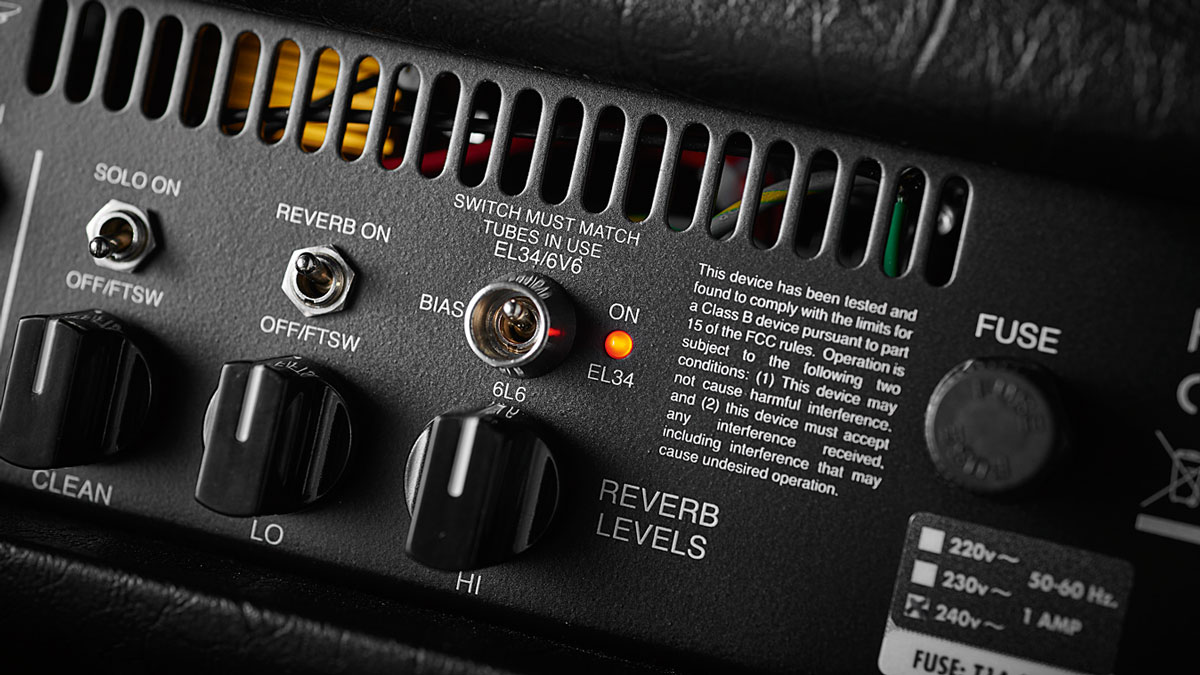
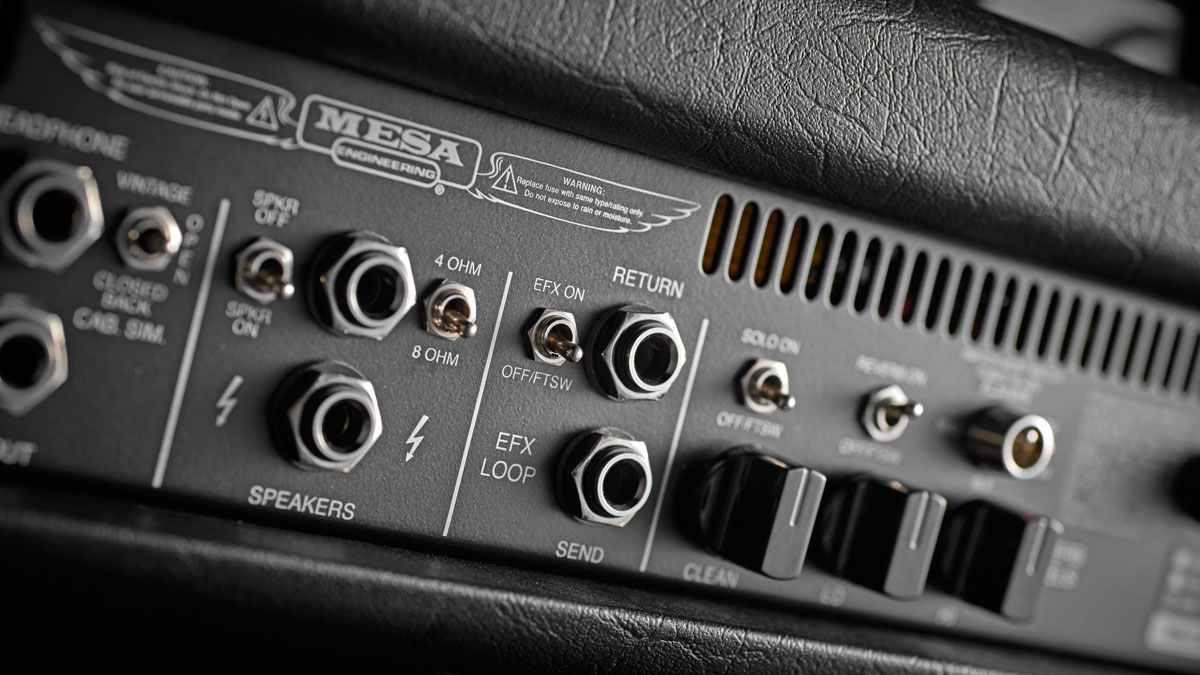
Specifications
Reasons to buy
Reasons to avoid
The Triple Crown TC-50 is a three-channel amp, with independent preamps covering clean, low-gain and high-gain ranges. The front panel packs three identical sets of controls including gain, master volume, bass, mid, treble and presence, together with a two-way toggle switch that changes the channel gain and voice. There’s a small toggle switch for manual channel changing, and a pair of master output level controls, one of which is footswitchable.
The feature-rich rear panel includes Mesa’s exceptional CabClone speaker-emulated output, with a balanced XLR, headphones socket and line out. The TC-50 also benefits from a footswitchable effects loop, separate reverb level controls for each channel, and MIDI switching for all the major functions.
The Triple Crown’s clean channel is highly versatile, going from butter-sweet clarity through to edgy blues soloing, with a lot of control over that ‘just on the edge’ sweet spot. The Lo Gain channel is where the TC-50’s crunch and classic rock tones live, with a multi-layered overdrive and harmonic overtones that shift with varying degrees of pick attack. Flipping the toggle switch into Drive mode adds a subtle midrange bump, invoking JCM800-approved snarl and a dose of extra gain. The Hi Gain channel adds more of the same - lots more, so much so that in the upper reaches we think this is probably the most gain ever from a Mesa amp.
No doubt about it, the Triple Crown has three channels packed full of world-class tone that only a handful of amps can compete with.
Read the full Mesa/Boogie Triple Crown TC-50 review
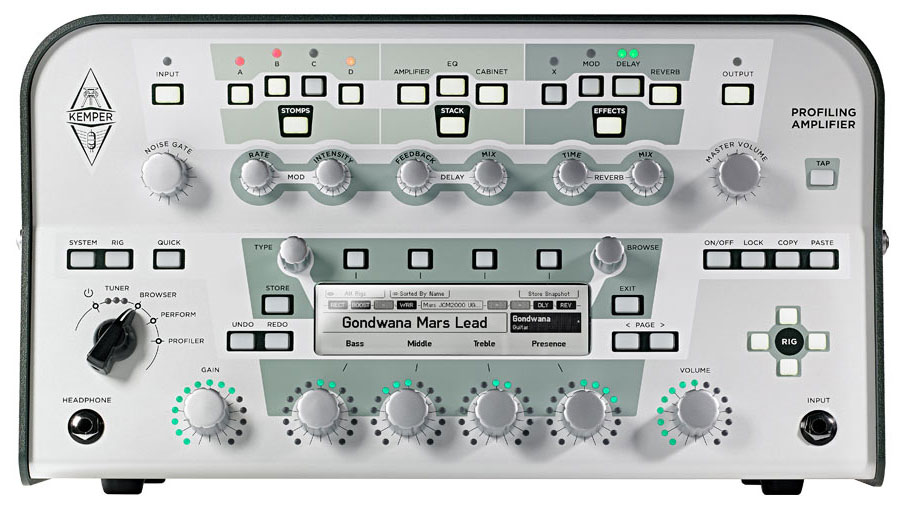
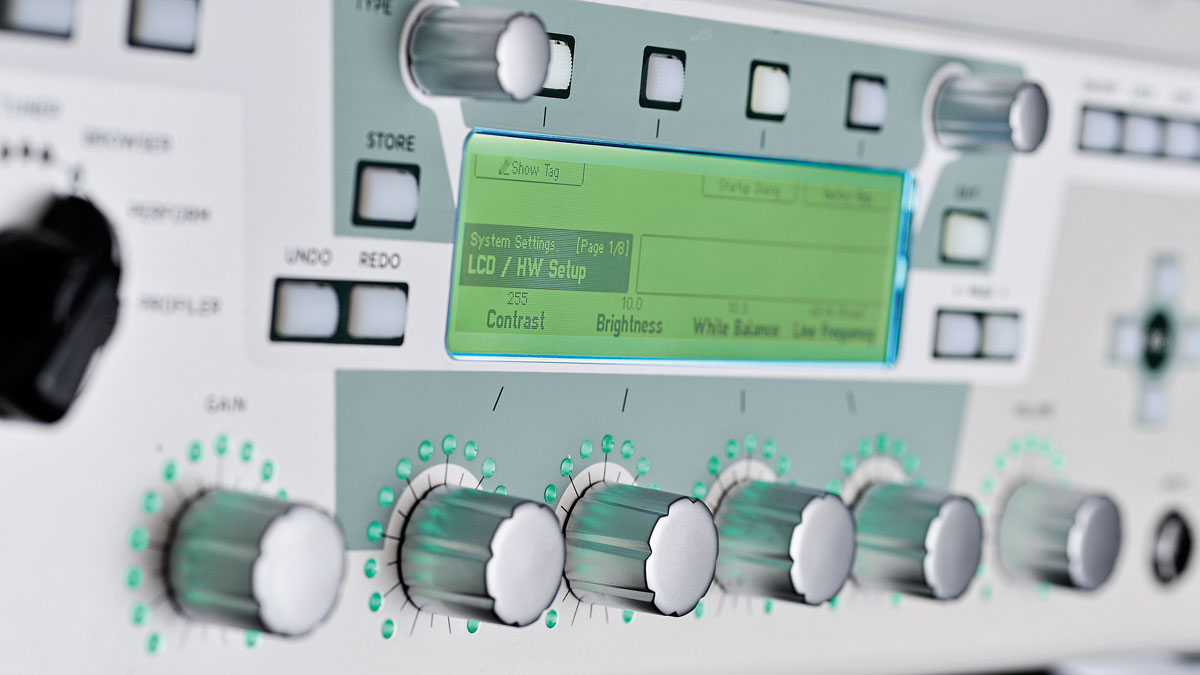
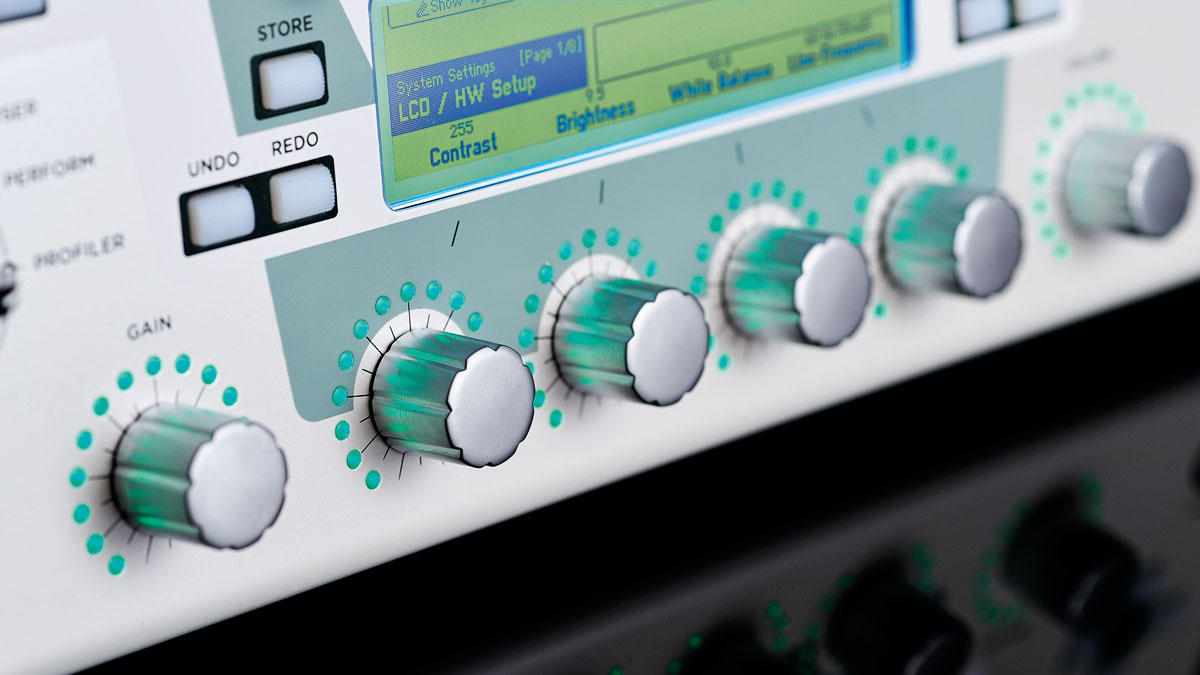
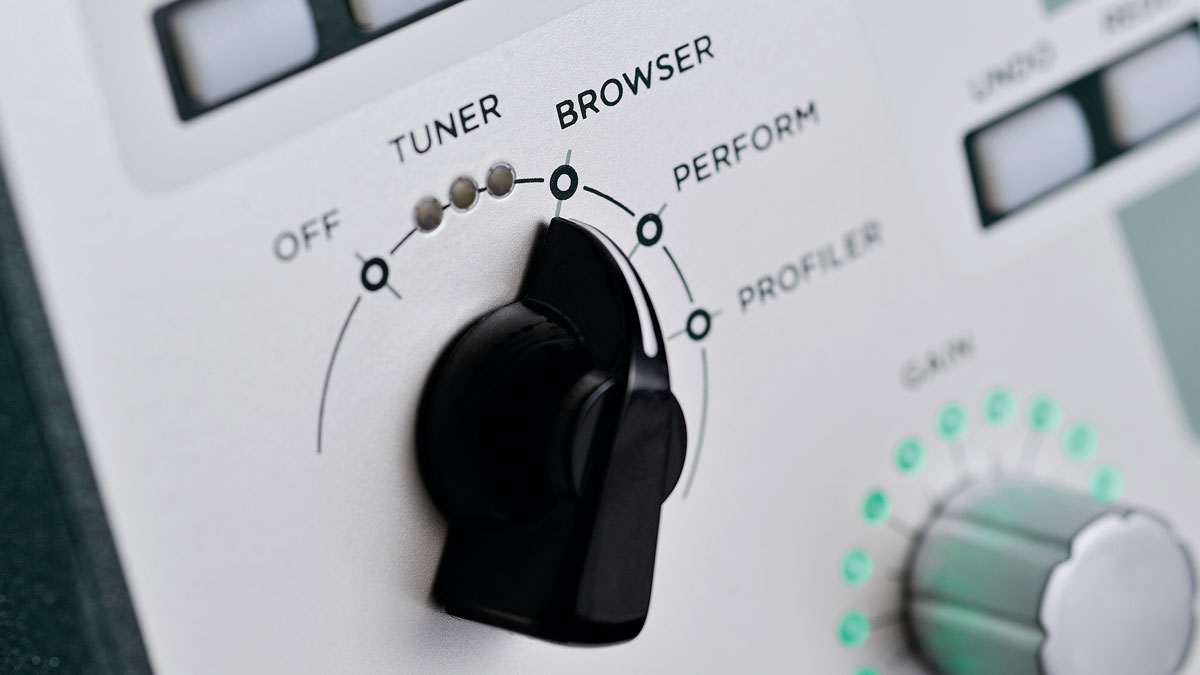
Specifications
Reasons to buy
Reasons to avoid
The exciting thing about the Kemper is that you can use it to capture the sound of your JTM45, right where it hits that sweet spot, with the microphone you prefer and that mic preamp that just adds a certain something. Then you can refine the 'profile' you've made while A/B-ing the digital signal with the original using the Kemper's onboard EQ, and save the sound alongside the library of 200 or so profiles that comes pre-loaded, with access to hundreds more via the Rig Exchange section of the Kemper website.
If you fancy a little more spice you can clean up or crank the KPA's onboard gain control to go way beyond the level of drive available on your original amp, adjust sag, tweak the audible effects of pick attack and even, thanks to what Kemper claims is "digital alchemy", alter the size of your virtual cabinet from a huge stack right down to a cigarette packet, while there's also a fully loaded set of effects. We've heard various approaches to digital modelling sound good in the studio before but this is as close to a 'real' mic'd valve amp sound as to be indistinguishable.
If you're the type of guitarist who records regularly, or a producer who wants 24/7 access to a personal library of refined and tested guitar sounds, all while retaining a familiar, amp-like user interface, the Kemper Profiling Amp is one of the best around.
Read the full Kemper Profiler Head review
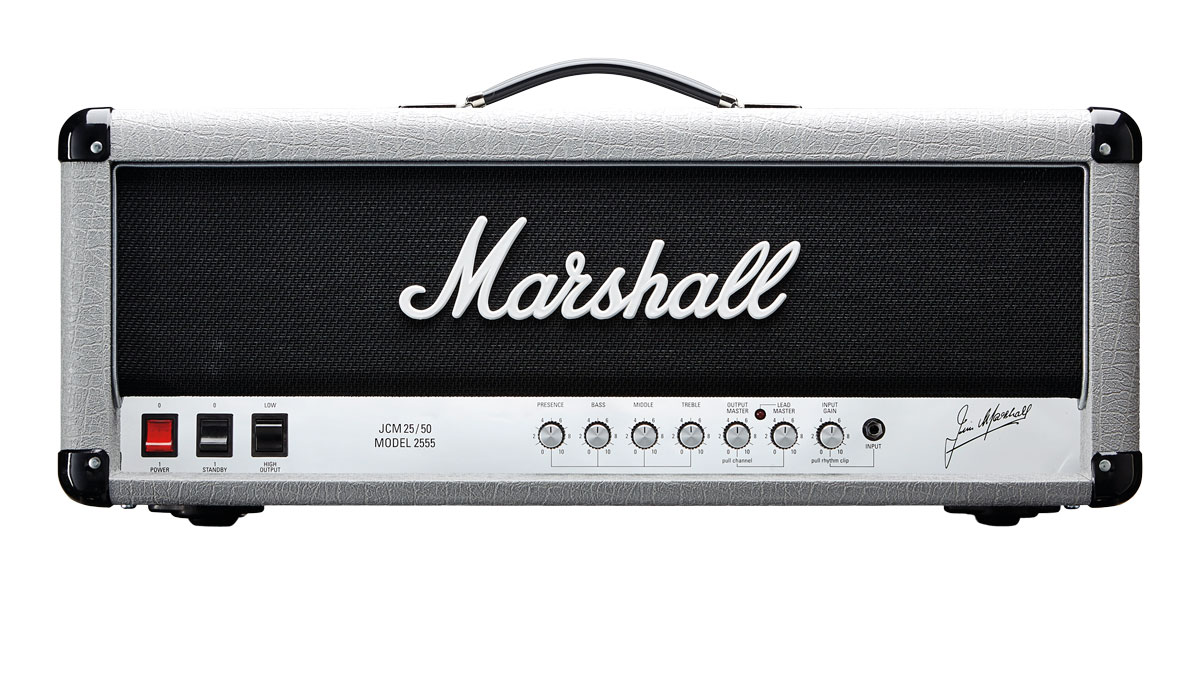
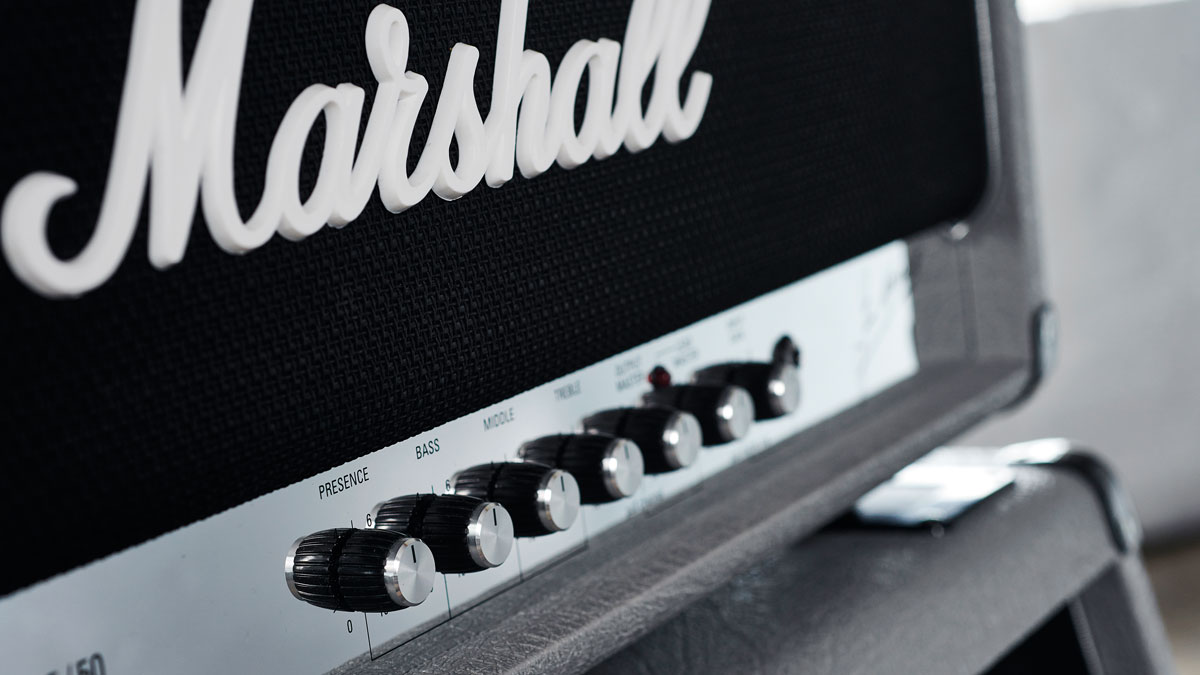
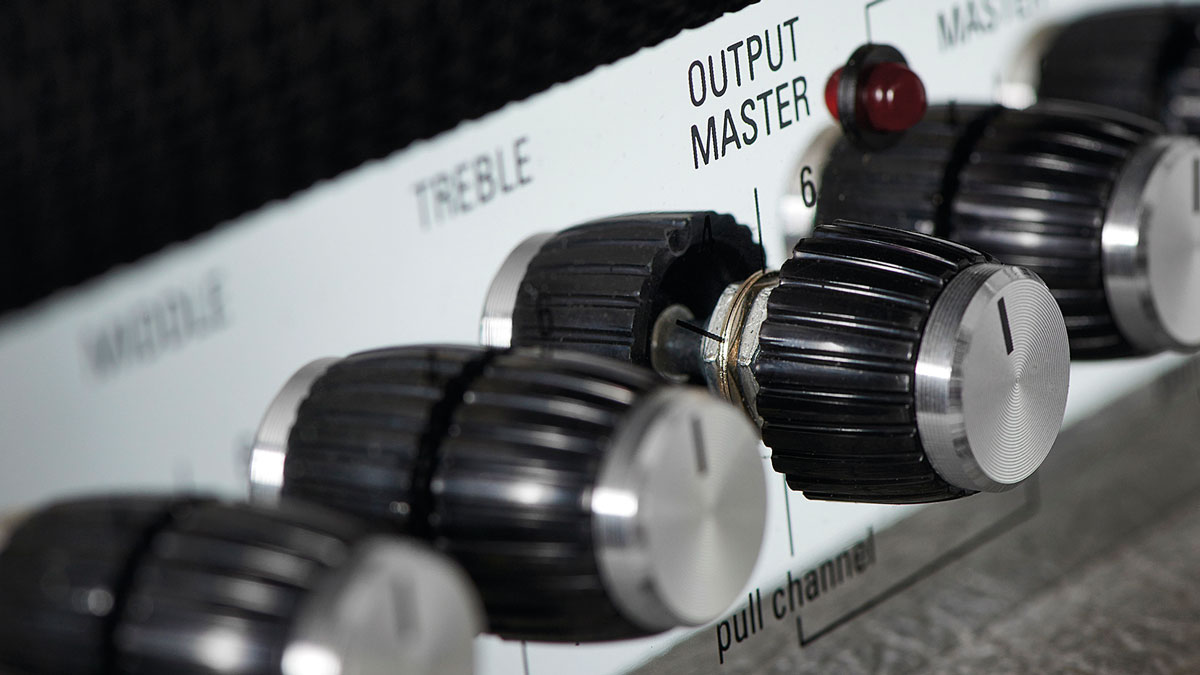
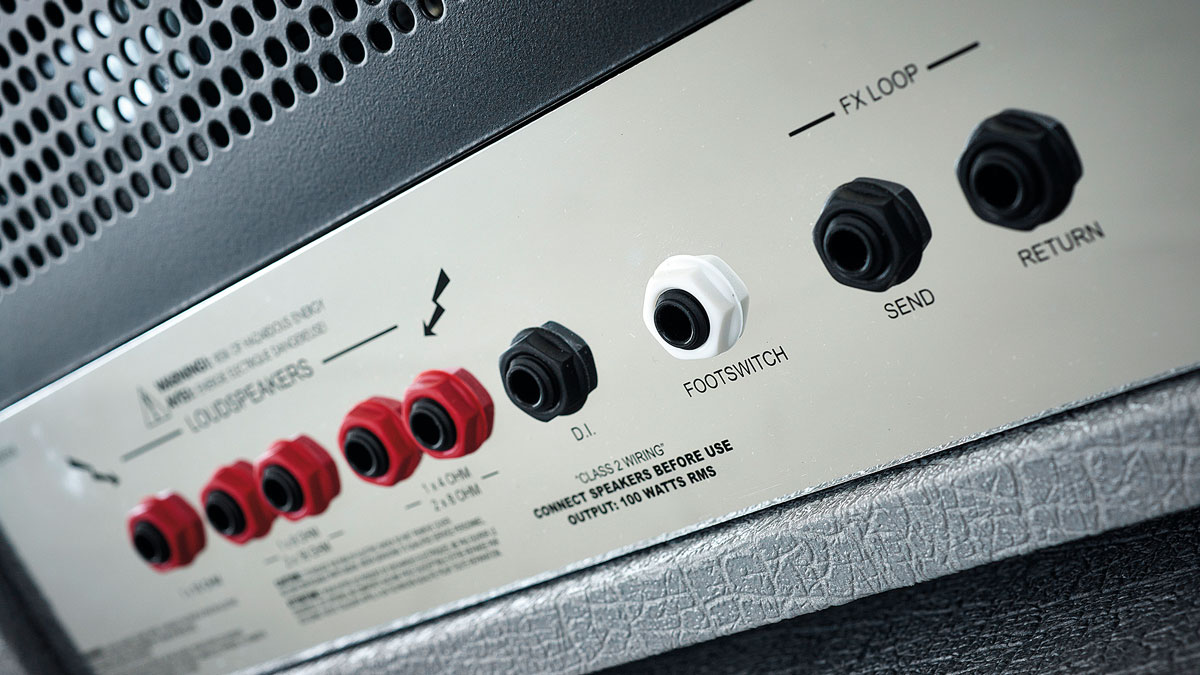
Specifications
Reasons to buy
Reasons to avoid
The 2555X Silver Jubilee reissue has the same silver vinyl covering used on the originals, and looks just as handsome. The controls are pleasingly familiar, with a simple front panel layout featuring controls for bass, mid, treble, presence, together with a preamp gain and two master volume controls - one for lead and one for rhythm.
A push/pull switch on the output master volume changes channels, while another on the gain knob flips the 2555X into rhythm clip mode, changing the clean channel into something a lot more aggressive. The third rocker switch changes the output stage mode from pentode to triode, dropping the power from 100 down to around 50 watts, and softening the attack a little.
The sparse rear panel also features a series effects loop, a fixed-level frequency-compensated DI output, and a jack socket for a single-button footswitch, used to change channels. Overall, the 2555X is built to last and look good for a long time, with Marshall's typically high build quality and attention to detail. Apart from its association with Slash, Joe Bonamassa, and various other high-profile users, the main reason why 2555s are so sought after is their sound.
We're pleased to report that the reissue amp is tonally as accurate as it possibly could be, with perhaps a touch more gain and low-end punch than the original. The 2555X accurately reproduces the original tone - and with a few minor exceptions, the look - of the original, at a price that's very reasonable compared with the competition, especially for a UK-made product.
Read the full Marshall JCM 25/50 2555X Silver Jubilee Reissue review
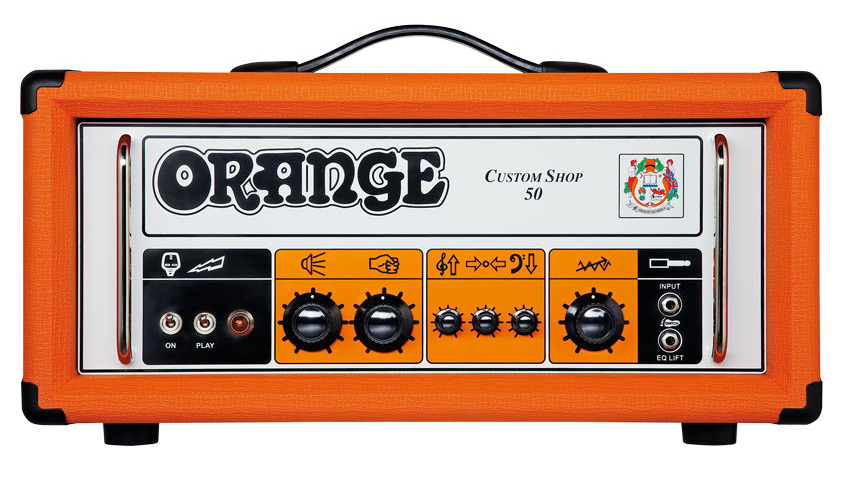
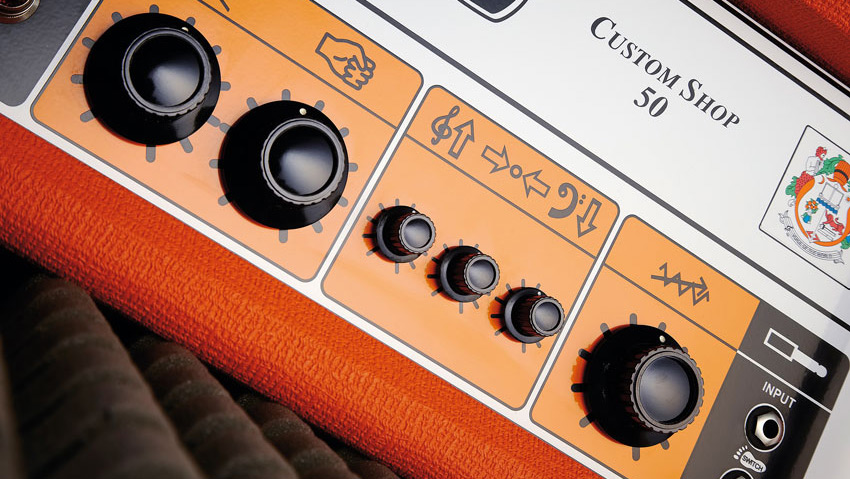
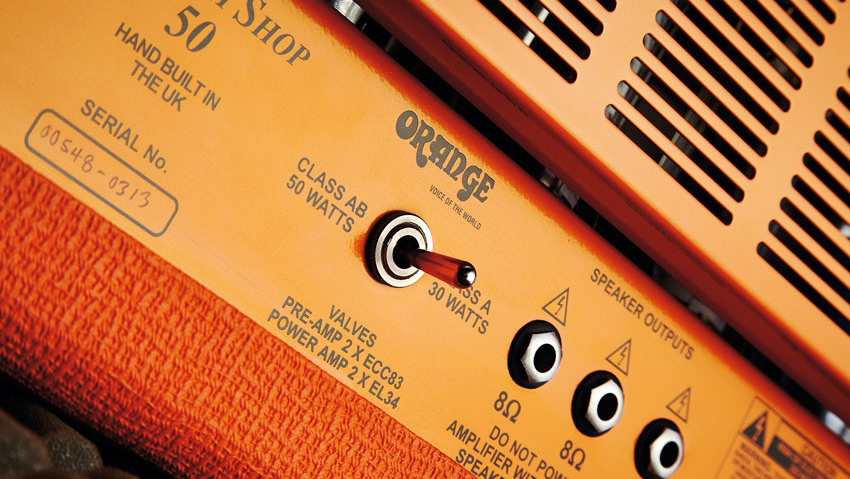
Specifications
Reasons to buy
Reasons to avoid
The Orange Custom Shop 50 has no bells, no whistles: just one channel, four valves, 50 watts and a lifetime of hand-wiring experience.
In terms of functions and features, you might think a straight-up single-channel amp is a bit simplistic, but the combination of Orange's gain, interactive tone section and HF Drive (presence) controls can return a very wide range of sounds. With no reverb built in, the lack of an effects loop might seem like an oversight, even though many amp purists would argue they're always a tonal compromise.
There are other Orange amps that offer all of the above should you want them but the CS 50's raison d'etre is simplicity, so the valve complement remains minimal: a pair of ECC83/12AX7s in the front end and a pair of EL34s for the power stage. A switch on the back panel lets you configure the power section for either 50 watts class AB, or 30 watts in class A.
The thick, juicy overdriven tones that this beast of a head kicks out are some of the most satisfying we've heard from any amp. From early Fleetwood Mac through AC/DC to Oasis, Foo Fighters and QOTSA, there's plenty of vintage and contemporary stylistic range on board.
Read the full Orange Custom Shop 50 review
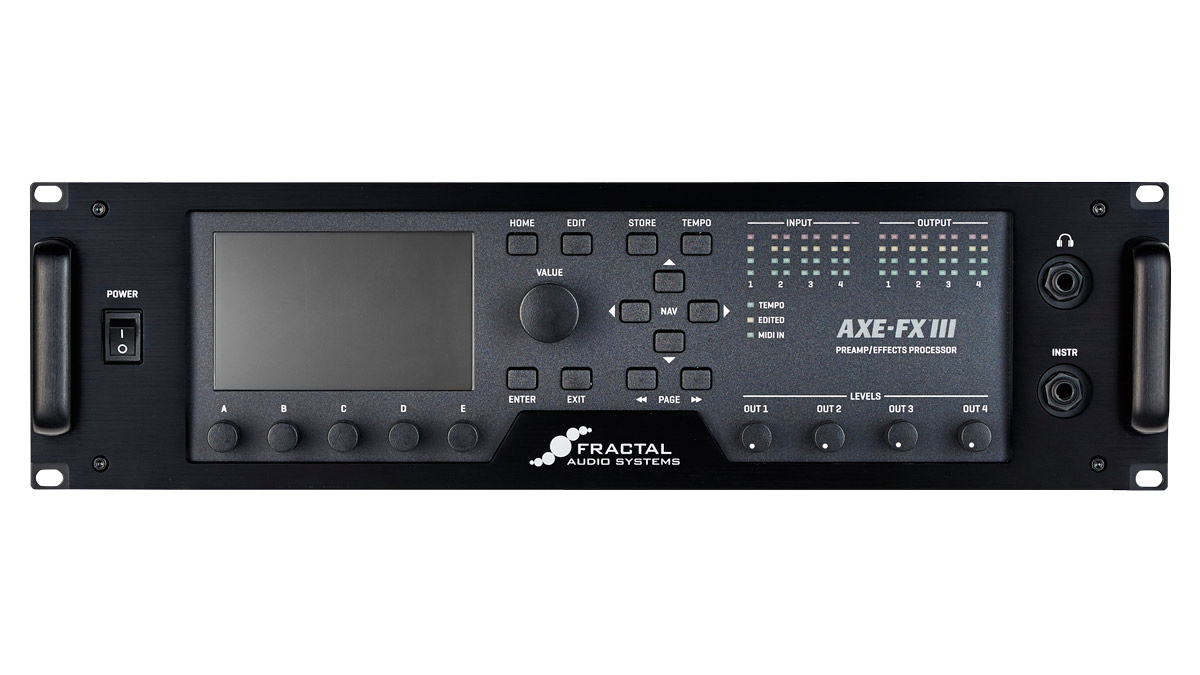
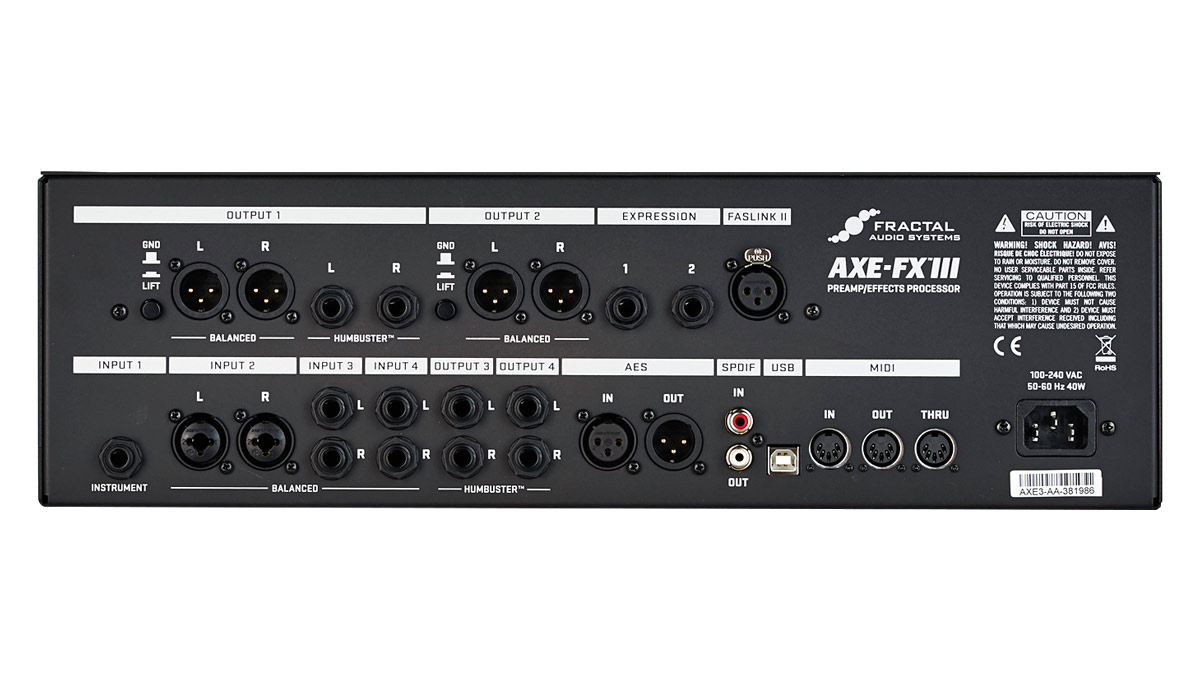
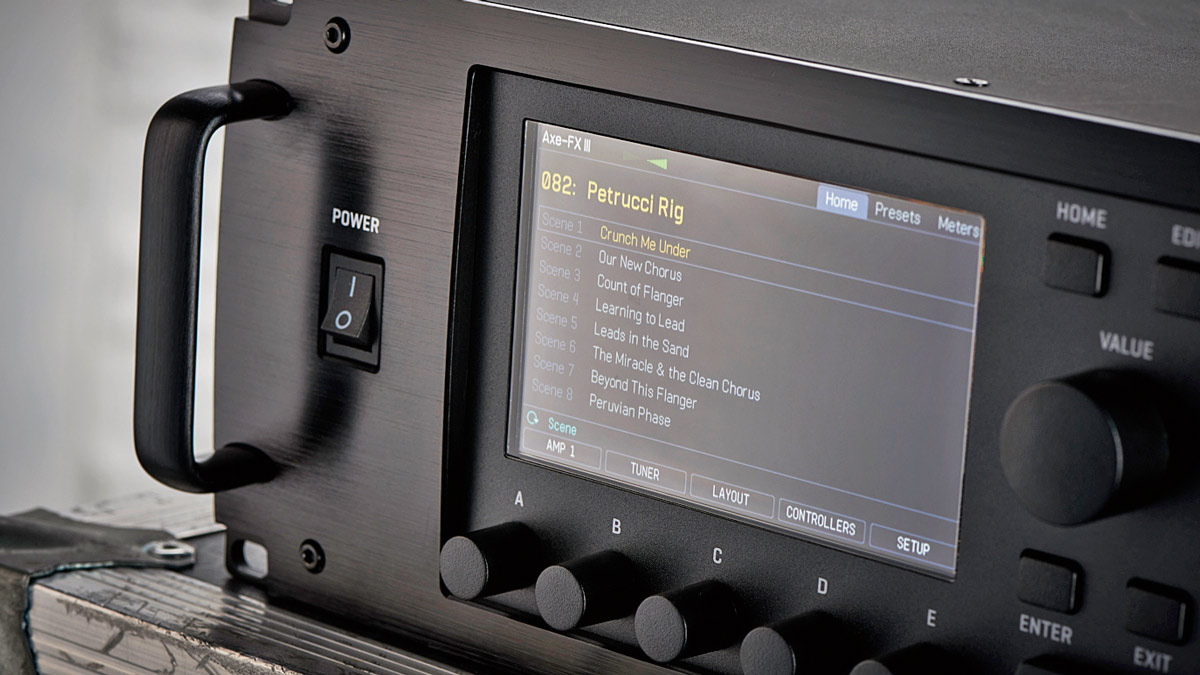
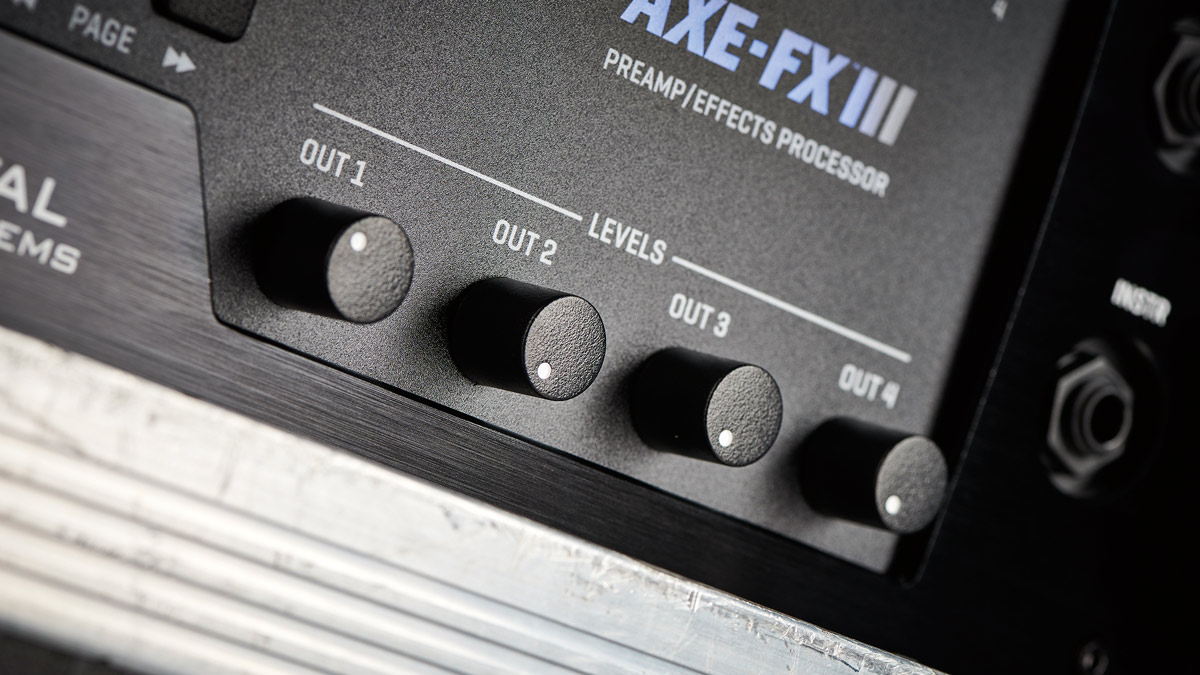
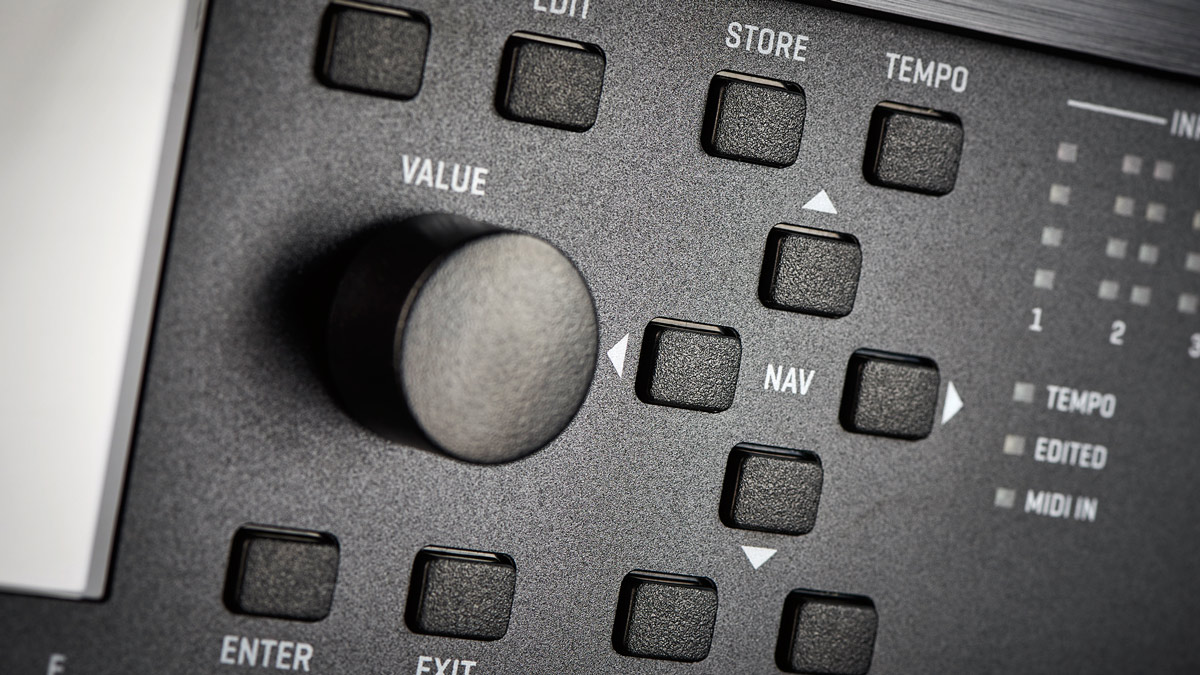
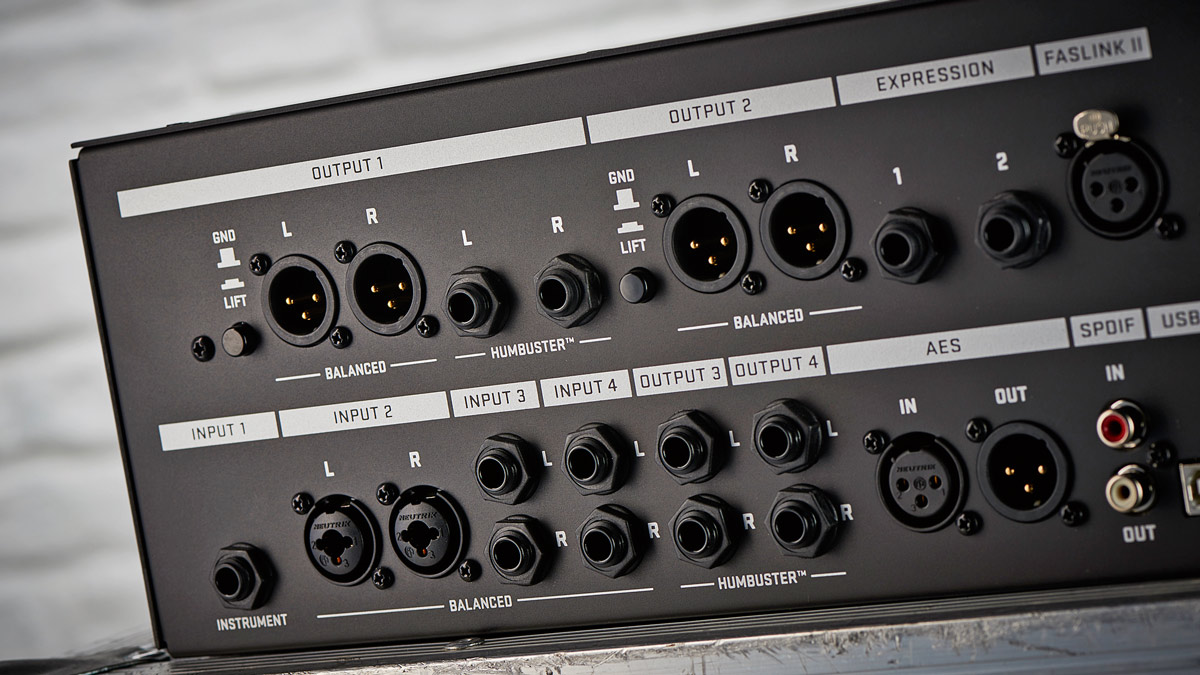
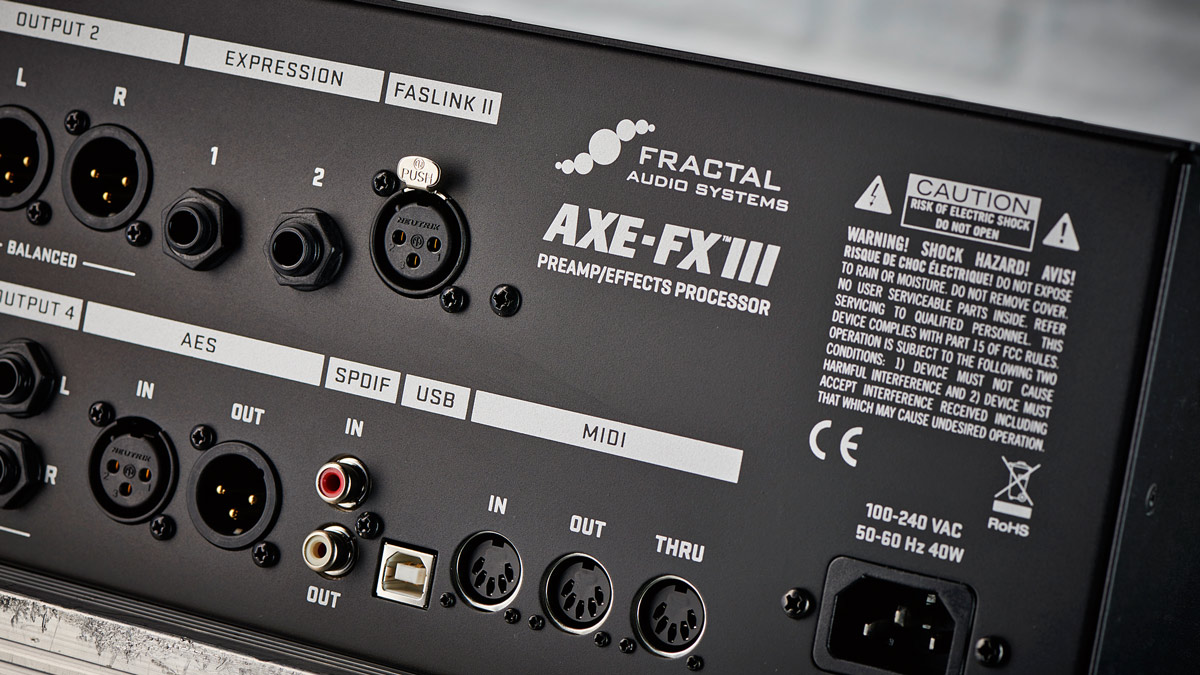
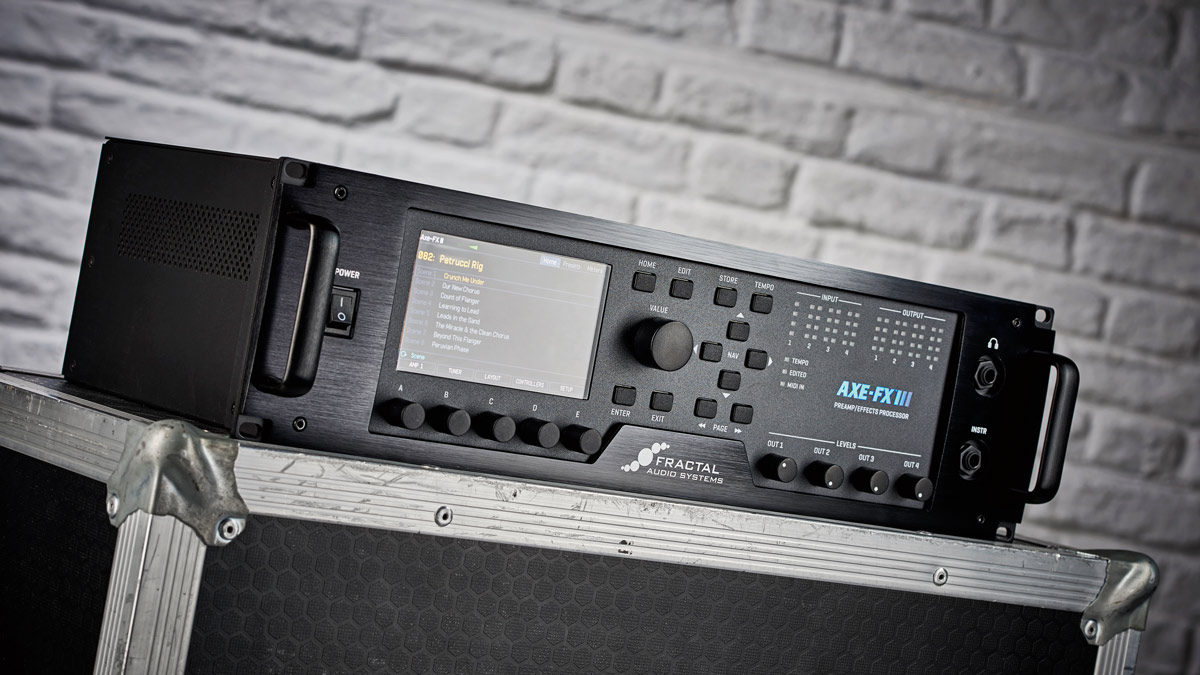
Specifications
Reasons to buy
Reasons to avoid
To many, the Axe-Fx is synonymous with modern digital modelling. The myriad amp options, EQ and tone-shaping tools and the addition of a powerful noise gate made the original a no-brainer in the late-2000s for the emerging wave of ‘djent’, or modern technical metal bands, that were seeking new tones not easily delivered by a real amplifier.
The Axe-Fx III is a huge update to Fractal’s flagship, bringing a host of new features to the table, such as a redesigned user interface, a large colour screen and a more ergonomic front panel. There’s also an overhaul of the processing hardware, with non-processing audio tasks delegated to a microcontroller, while two 1GHz ‘Keystone’ Digital Signal Processors handle the heavy lifting. Their benchmarks peg its performance at double that of the Axe-Fx II, and audiophile components, such as Burr-Brown op amps in the signal path, mean excellent signal-to-noise ratios that will beat most dedicated audio interfaces - plus, thanks to a USB port, you can use the unit as an interface for your DAW, and for re-amping to boot.
Although competitors like the Helix are perhaps more immediate, the Axe-Fx III has made great strides in terms of usability and ease of editing. Fractal Audio has once again laid down the gauntlet for what the professional end of the modelling market should aspire to.
Read the full Fractal Audio Axe-Fx III review
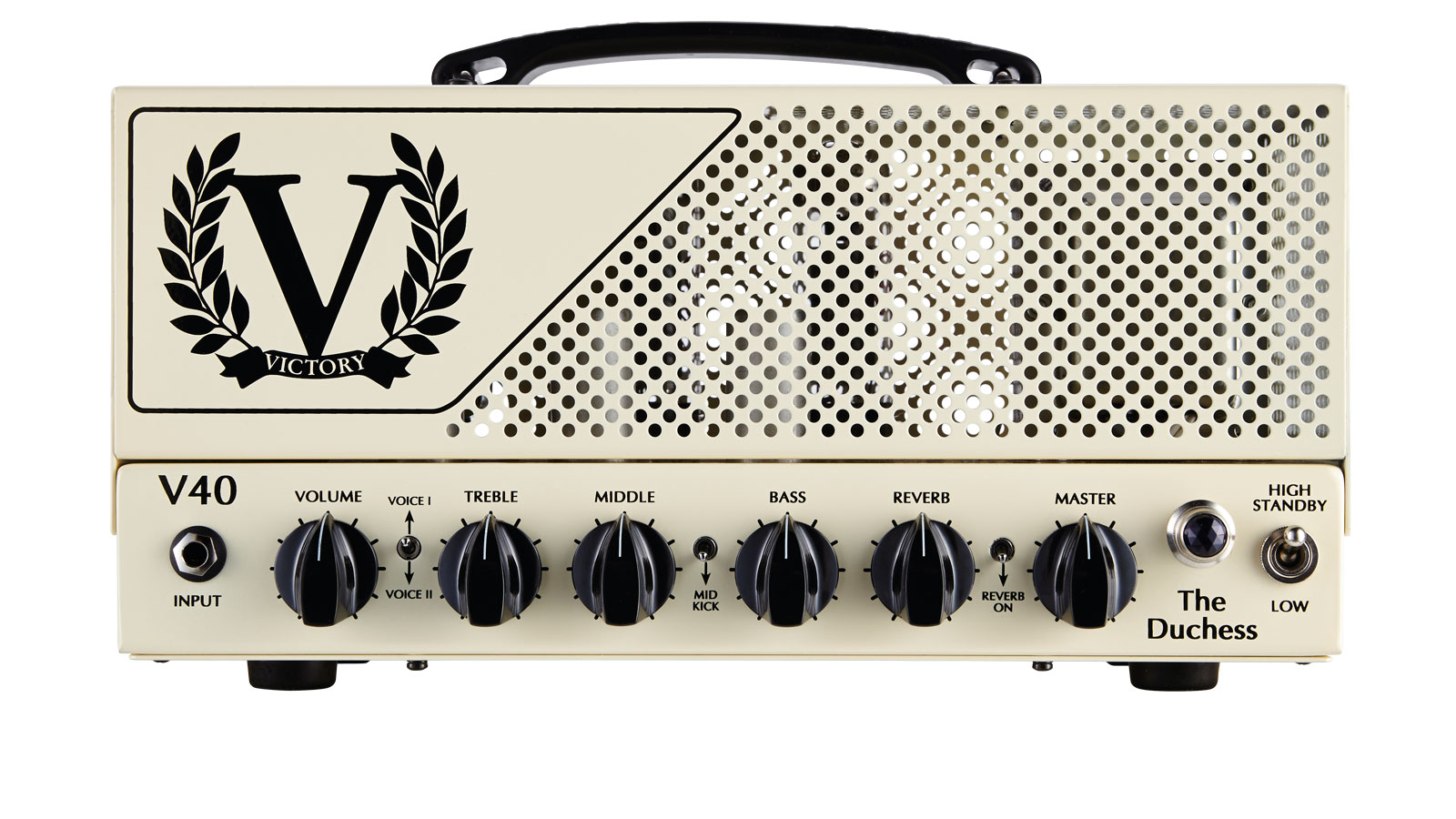
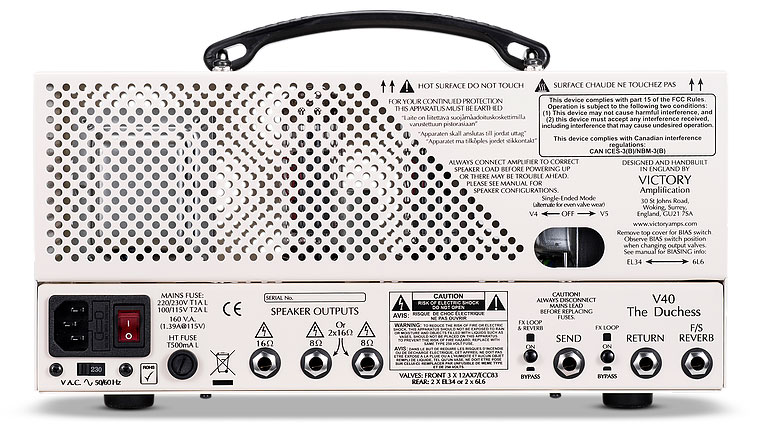
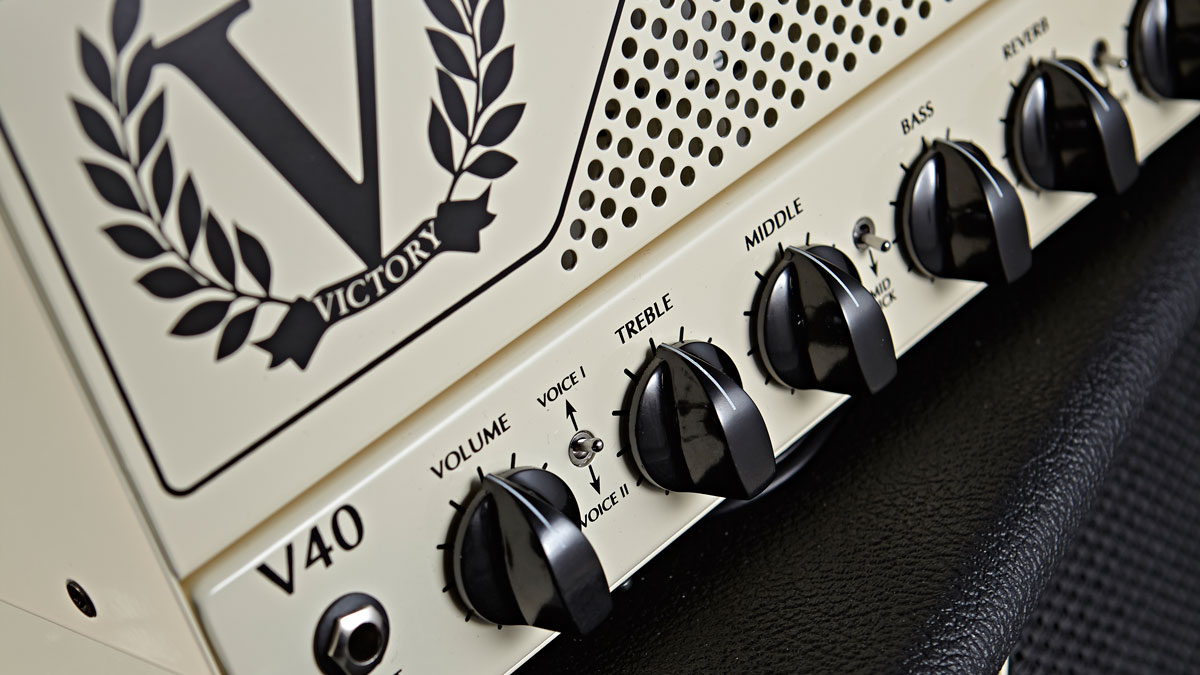
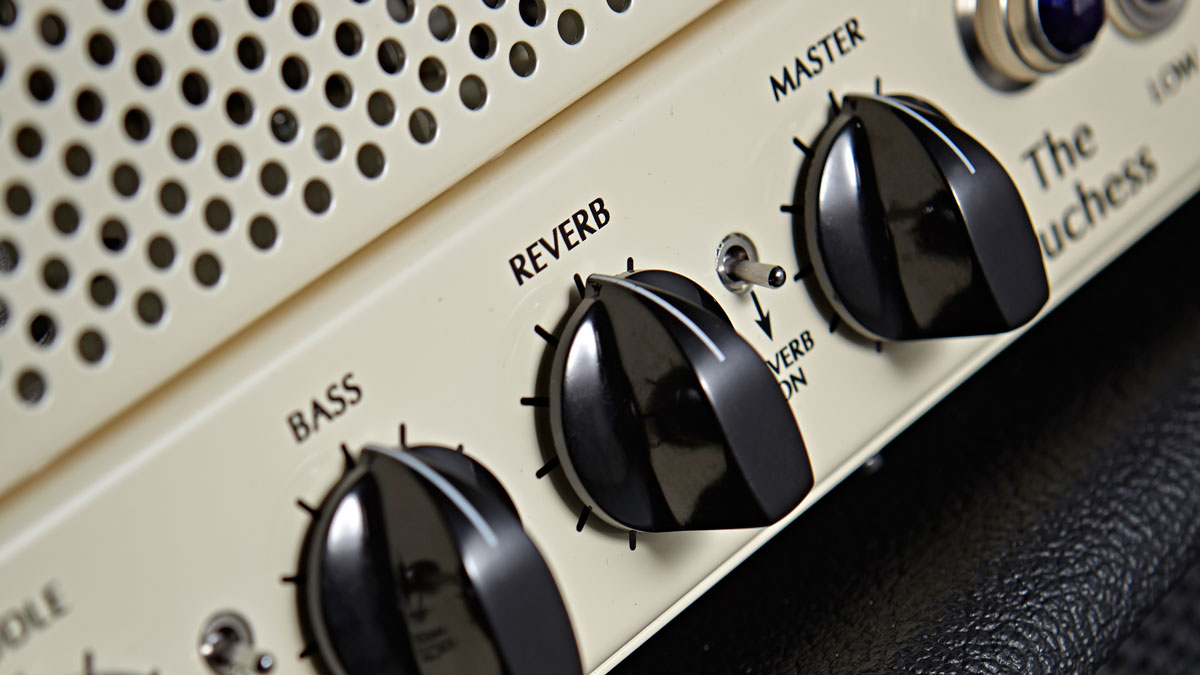
Specifications
Reasons to buy
Reasons to avoid
The V40 expands the elusive low-to-medium gain range, putting a wide spectrum of subtly shifting overdrive textures under your fingers. There are rotary controls for gain, EQ and master volume. The real fun starts with a two-position voice switch, which subtly changes the V40's character. Voice 1 is centred more on the early 60s 'blackface' tone; Voice 2 is edgier and a touch more aggressive, evoking the tweed amps of the 1950s. A small toggle switch called 'mid kick' adds a touch of extra gain in the midrange, not least to give weedy single coils a lift for solos.
There's also a digital reverb with a front-panel level control and on/off switch. Then there's the standby switch, which has two 'on' positions for high power (approximately 40 watts) and low power (seven watts). This switch also works in the V40's single-ended mode, offering a choice of around 1.5 watts in the high-power position and 0.5 watts in the low-power setting. The V40's sonic palette made us sit up and take notice. By reducing the gain, all the mildly overdriven and chime effects normally squeezed into a fraction of the gain knob's travel now occupy the whole range.
The V40 Duchess is a unique design - many of its competitors feature high-gain lead channels, teamed with high headroom and often uninspiring clean channels. By focusing on those often-overlooked but highly effective low-to-medium overdrive sounds, the V40 has effectively carved out its own niche, and looks set to become popular for blues, roots, jazz and country players.
Read the full Victory V40 'The Duchess' review
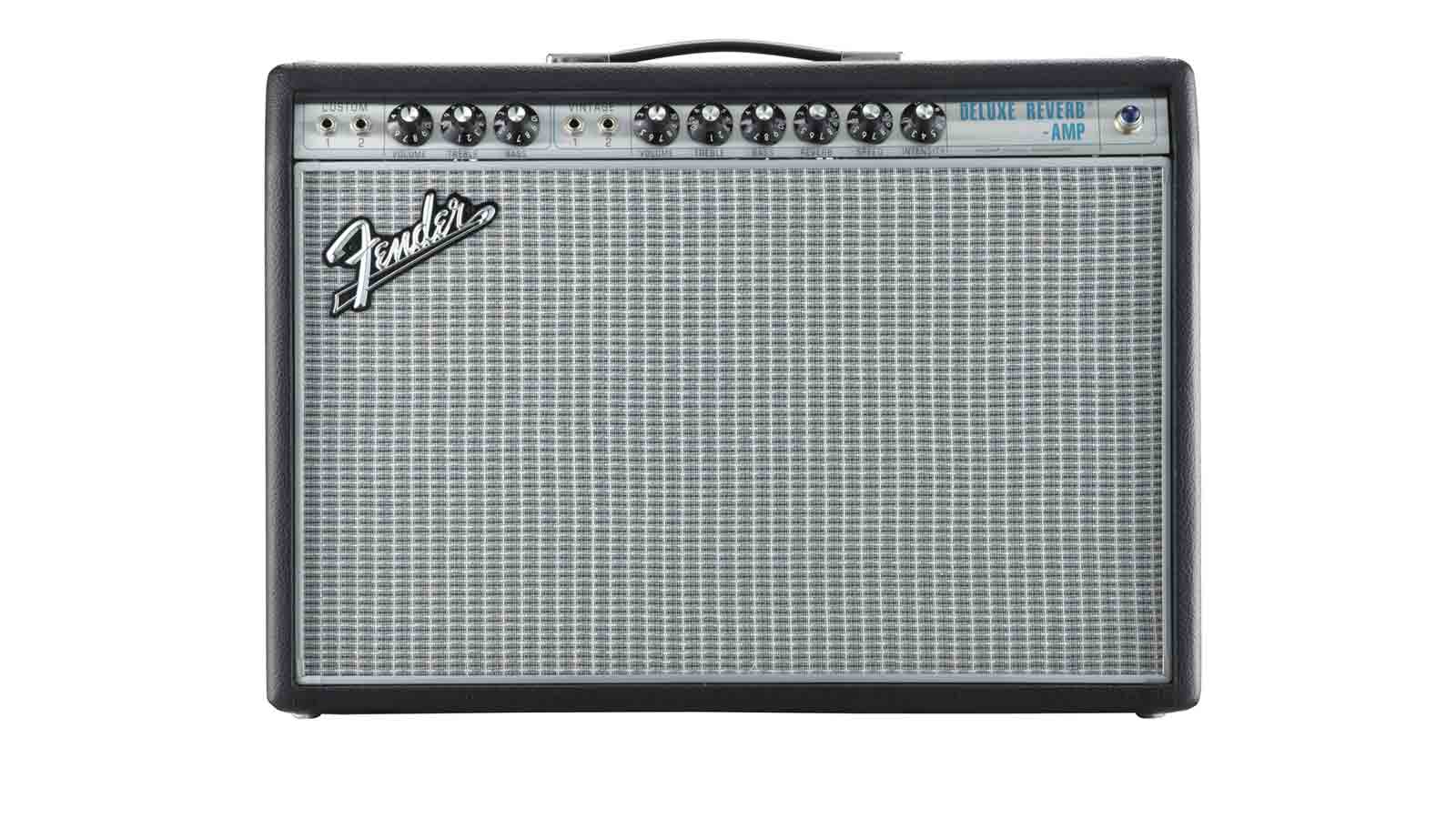
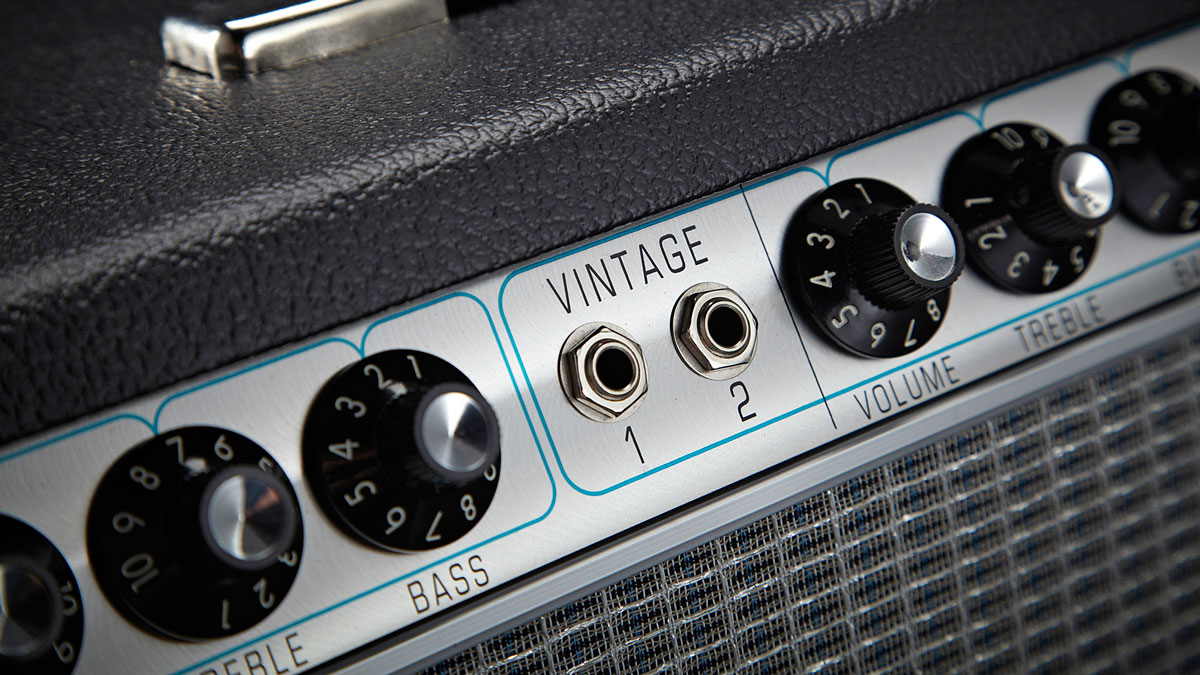
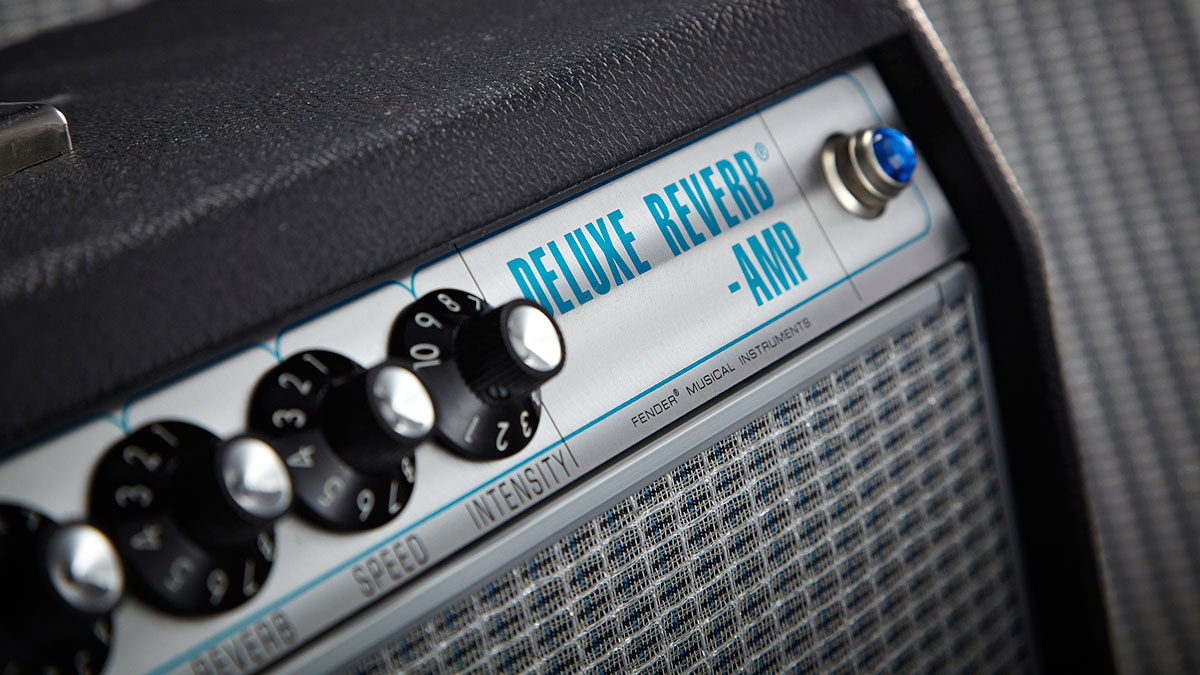
Specifications
Reasons to buy
Reasons to avoid
One of the all-time classic gigging and recording combo amps, in this new incarnation the Deluxe Reverb is arguably more practical than ever, thanks to the extra versatility offered by being able to utilise the tremolo and reverb on both channels.
Where original Deluxe Reverbs of the period would have had a Normal channel, sans tremolo or reverb, the new '68s have a Custom channel with access to those global effects and a new voicing, courtesy of a "modified Bassman tone stack" that's billed as being more pedal-friendly. Where you would have found a Vibrato channel, there's now a 'Vintage' channel with a more traditional voicing.
There's a magic sweet spot between 4.5 and 6 on the volume control (depending on your choice of guitar), where the amp delivers a wonderful, dynamic dirty-clean rhythm sound at stage level that works as a brilliant core guitar sound for all manner of rock 'n' roll, Americana, blues and classic pop applications. Just add picking-hand dynamics and your guitar's volume control; there's so much range here.
The onboard reverb and tremolo are wonderful, classic-sounding musical tools that push and inspire you to play in a certain way. Far more than a means of merely amplifying your guitar sound, this is a musical instrument in itself.
Read the full Fender '68 Custom Deluxe Reverb review
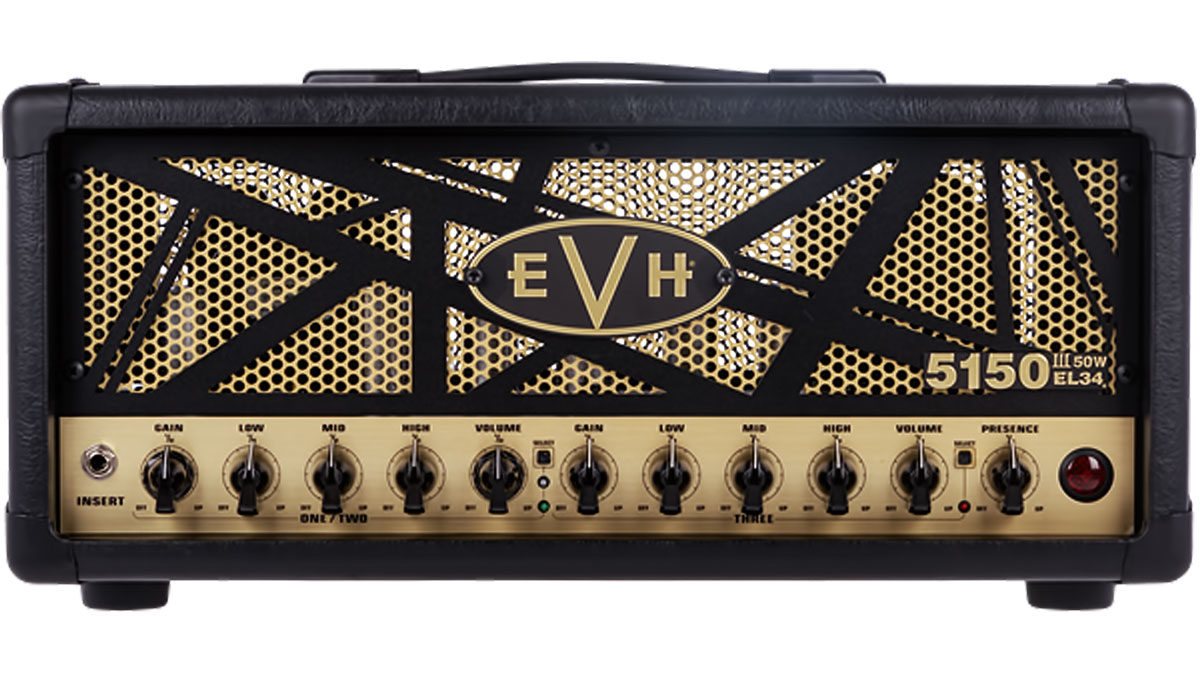
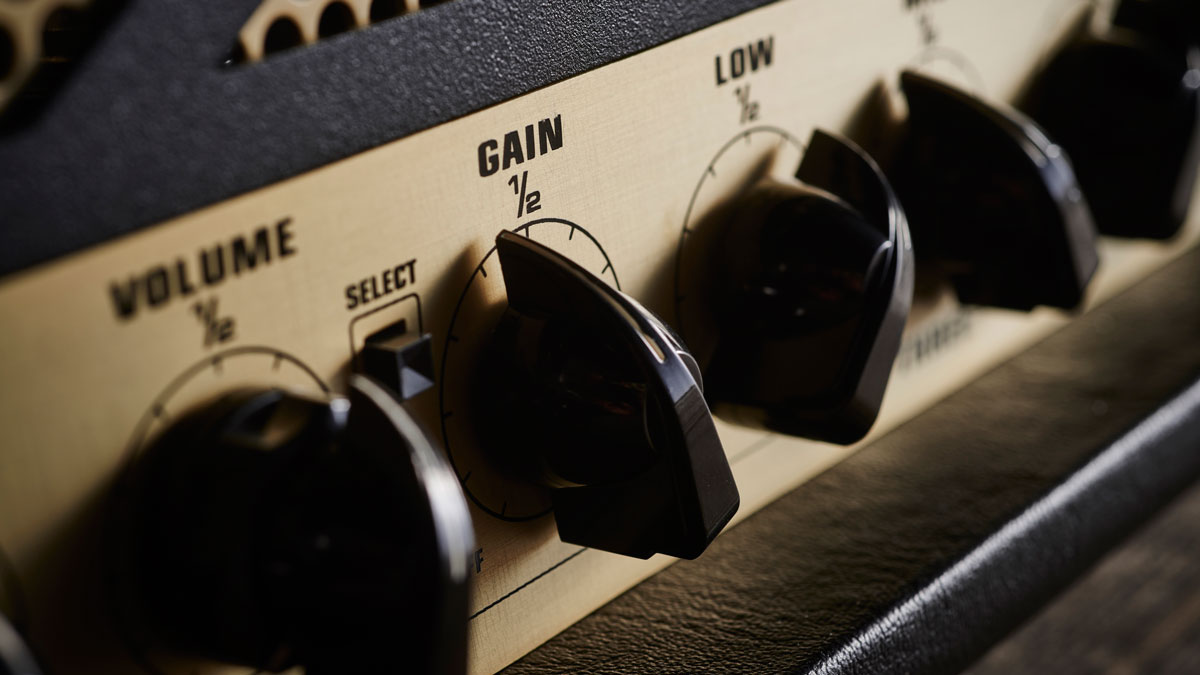
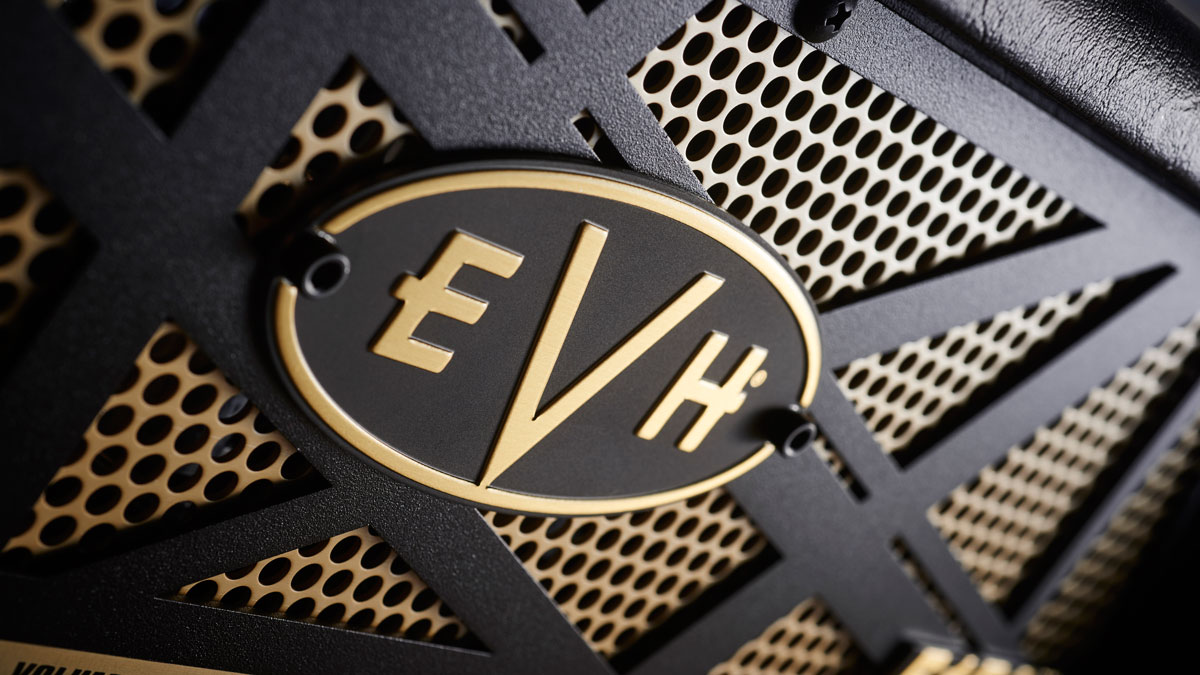
Specifications
Reasons to buy
Reasons to avoid
The 5150 III EL34 50-watt head downsizes EVH's high-gain format, and boasts three channels: channel 1 (clean) and channel 2 (crunch) share the same EQ but feature separate gain and volume controls on clever, dual concentric pots; channel 3 (lead) gets its own dedicated EQ. A global presence control on the front panel and a global resonance control on the rear panel tune the power amplifier’s high and low frequency response to taste.
The 5150 EL34 also takes MIDI program change commands, so you can sync it to MIDI-compatible effects units and floor controllers. The EL34 version of the 5150 is important because Van Halen’s groundbreaking early work relied exclusively on heavily-modified Marshall Super Lead heads, which used EL34s. Sat firmly in hot-rodded Plexi territory, the 5150’s channel 1 is capable of sparkling cleans, with enough gain for mildly driven blues sounds.
Channel 2’s higher gain is perfect for crunch and classic rock leads, while Channel 3 launches into the stratosphere with gain levels that are cheerfully insane, yet works a clever magic trick by retaining most of the dynamics that are often lost at such extremes. This means the 5150 sounds properly cranked up, even at quite low practice levels. EVH’s 5150 III 50W EL34 is a highly-effective weapon for the modern rock and metal player that puts tone before unnecessary complexity.
Read the full EVH 5150 III 50W EL34 review
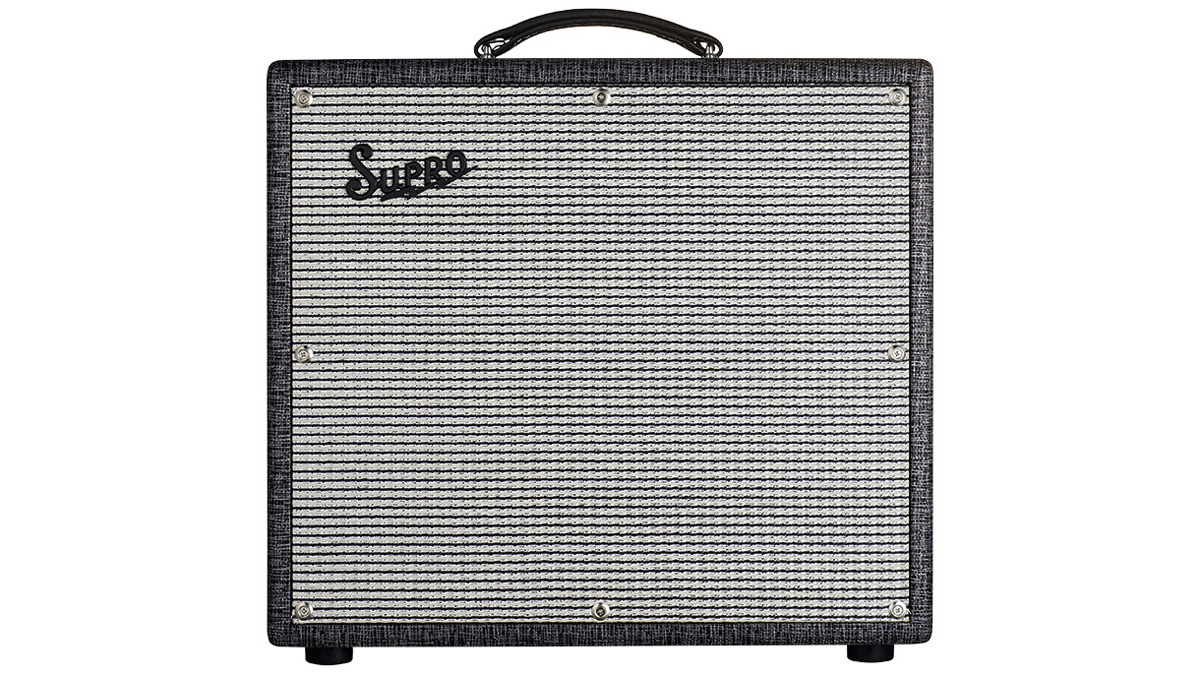
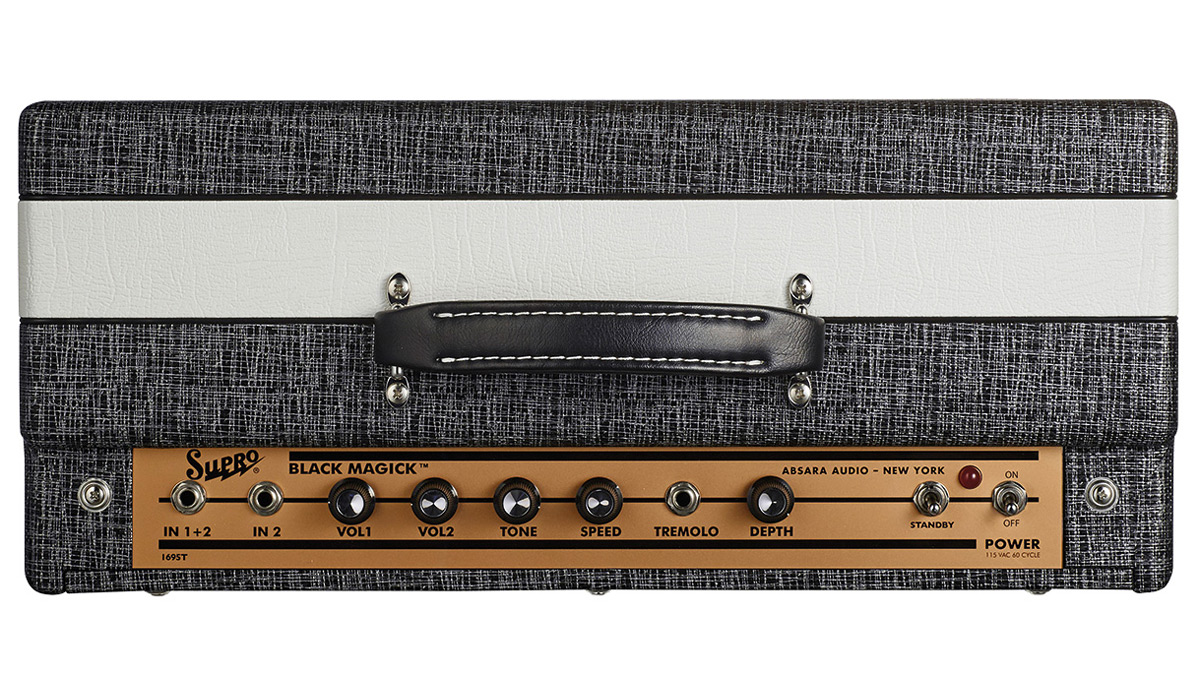
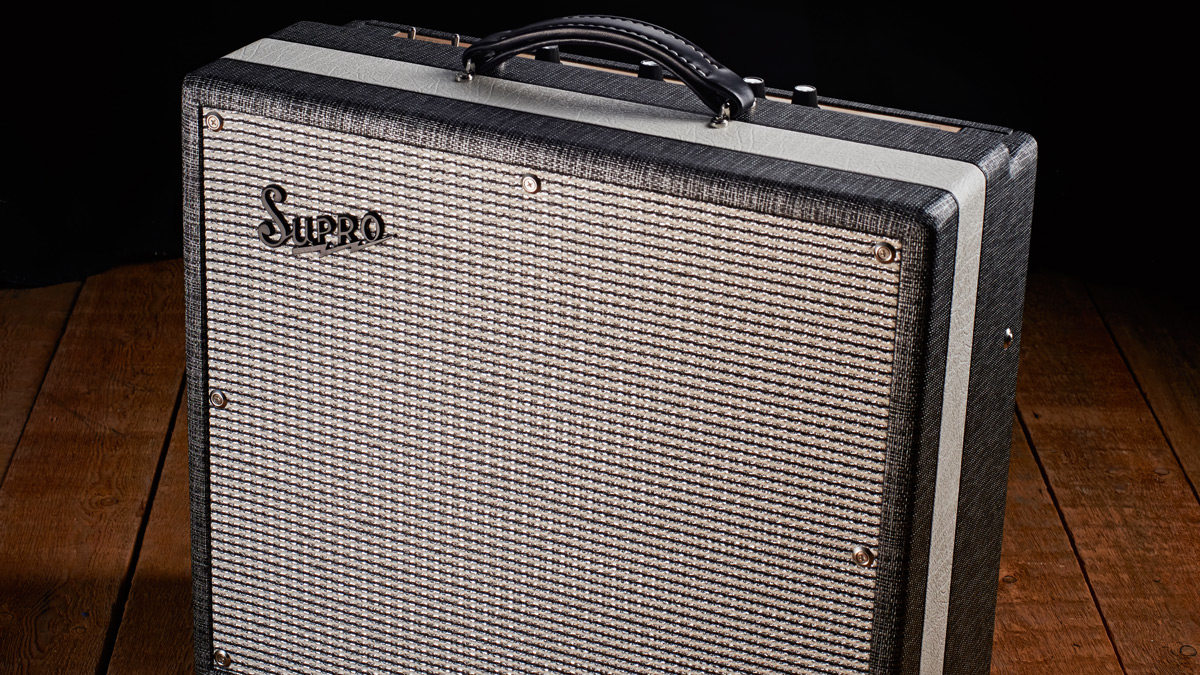
Specifications
Reasons to buy
Reasons to avoid
Assembled in Long Island, the Supro 1695T Black Magick is a recreation of the amplifier Jimmy Page used in the early days of Led Zeppelin. Beyond that black-and-white rhino Tolex hide, you get two channels, one tone control, four 12AX7EH preamp tubes and a pair of 6973 bottles feeding the 25-watt Class A power amp.You'll also find a tube-driven tremolo circuit that can be engaged or otherwise with a footswitch (not supplied), again, just like Jimmy's...
The amp also boasts a pair of inputs - channels one and two with a parallel link and channel two solo. We'll wager it's the parallel link socket that will keep you most occupied. This arrangement, utilising both volume controls, provides the most gain, and it's here that you'll get closest to the distinctive breakup of Jimmy's early Led Zep tone. Running clean, there is bags of clarity and sparkle for chord work, but dig in and you'll unlock the sweetest valve compression as the volume reaches the 12 o'clock point. Keep twisting those dials and you start to reveal the Supro's natural overdrive.
Unless you use a fuzz pedal, or a treble booster, the 1695T will be loud at this point. It won't make you popular with the neighbours, but the sheer dynamic response on tap means you won't need friends. Beautifully realised, the 1695T Black Magick epitomises the old-world charm of small valve amps.
Read the full Supro 1695T Black Magick review
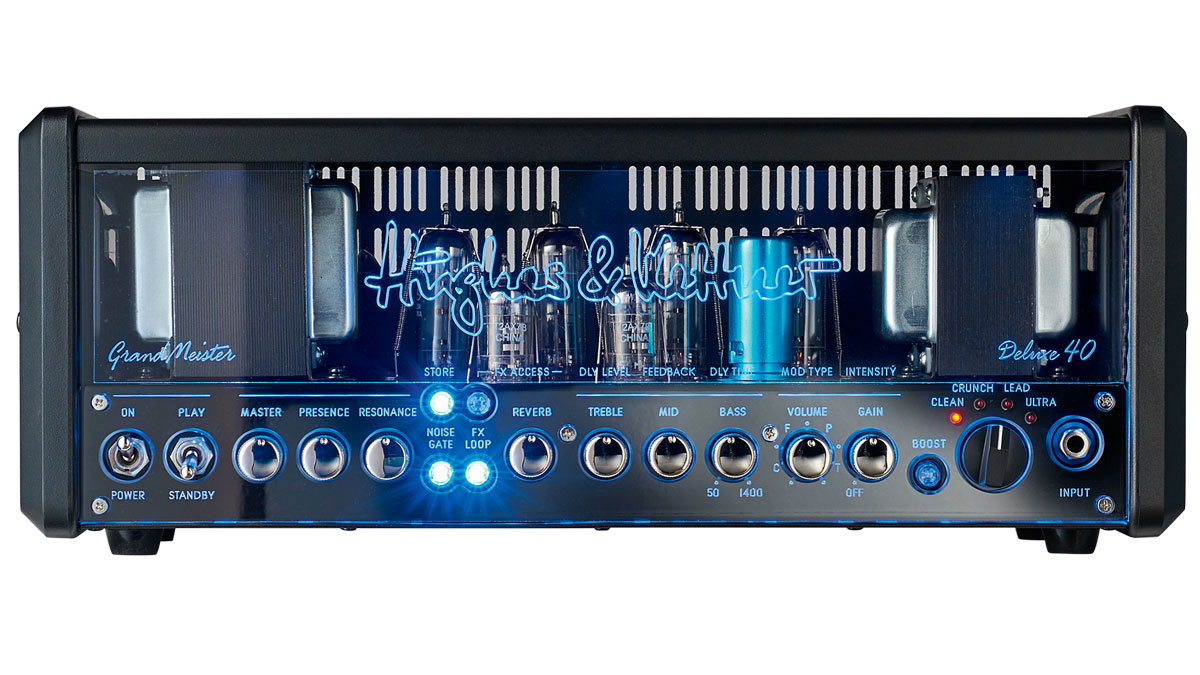
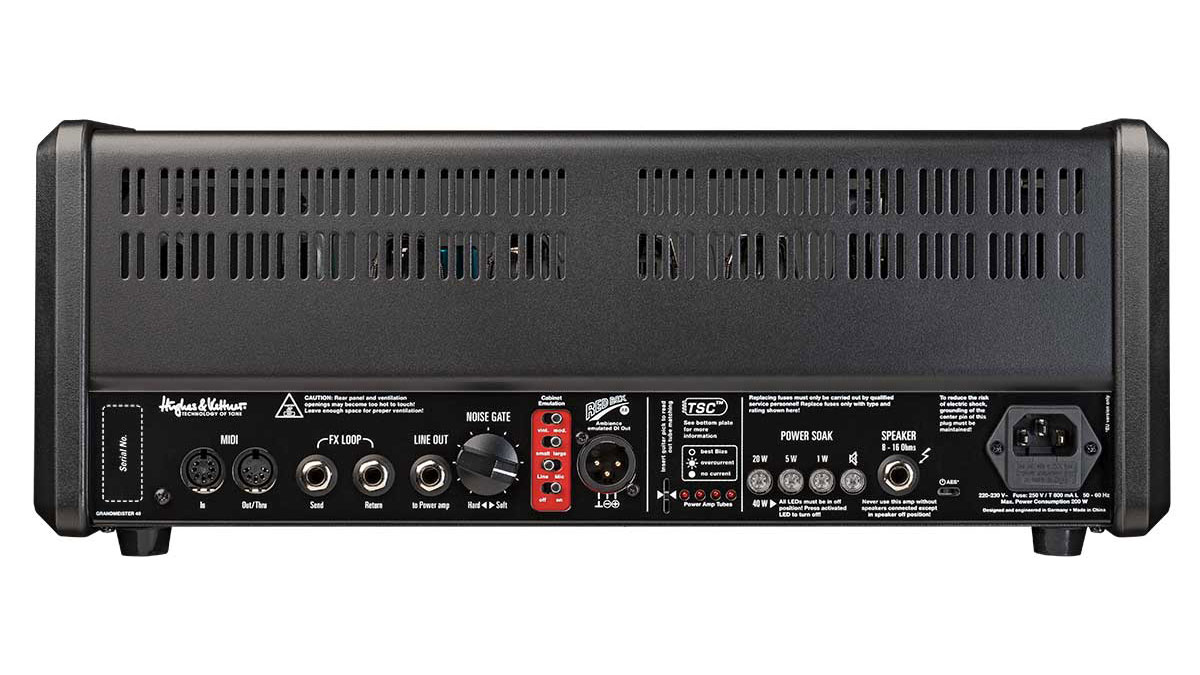
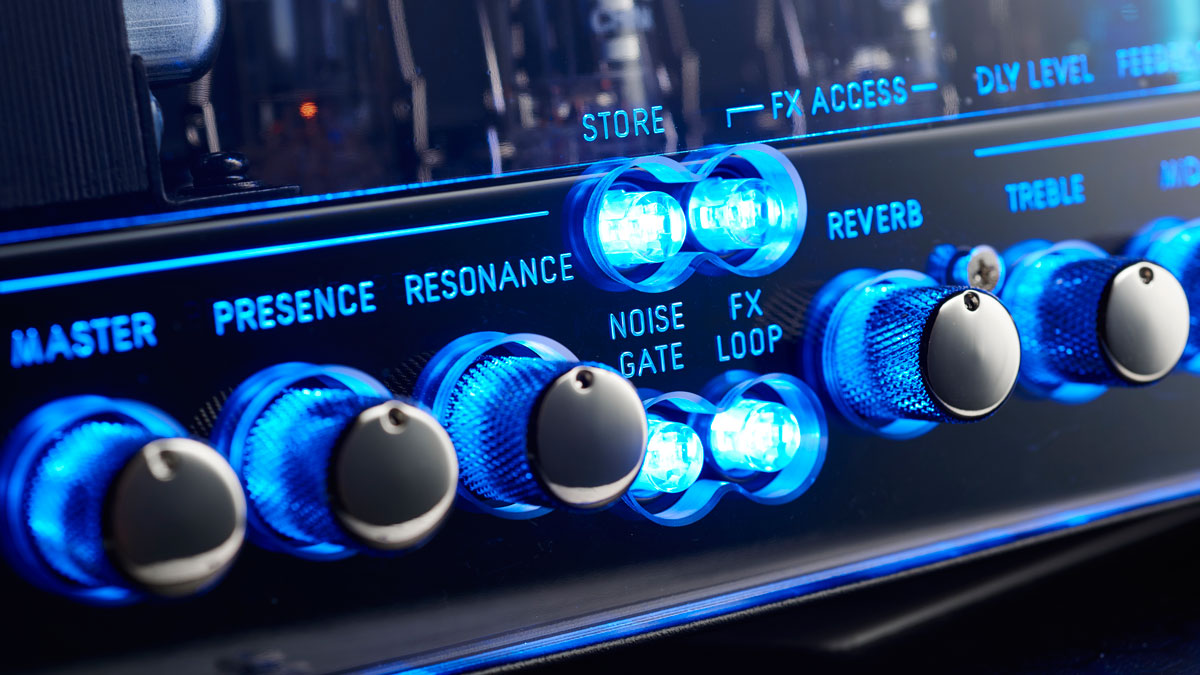
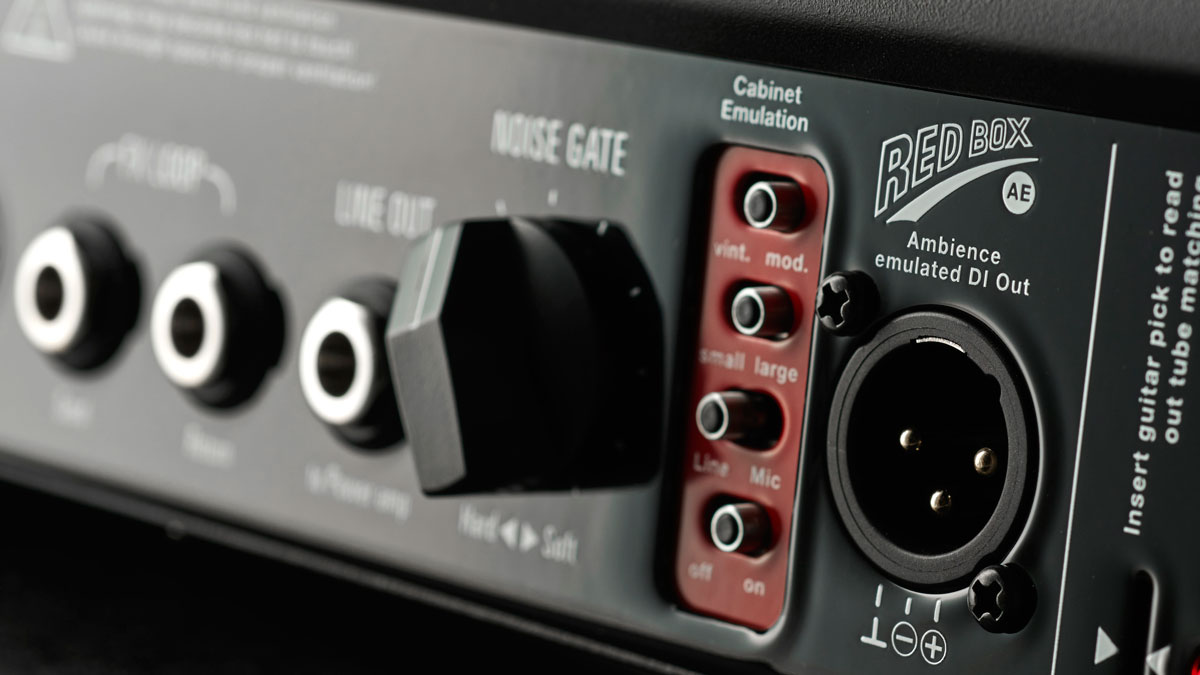
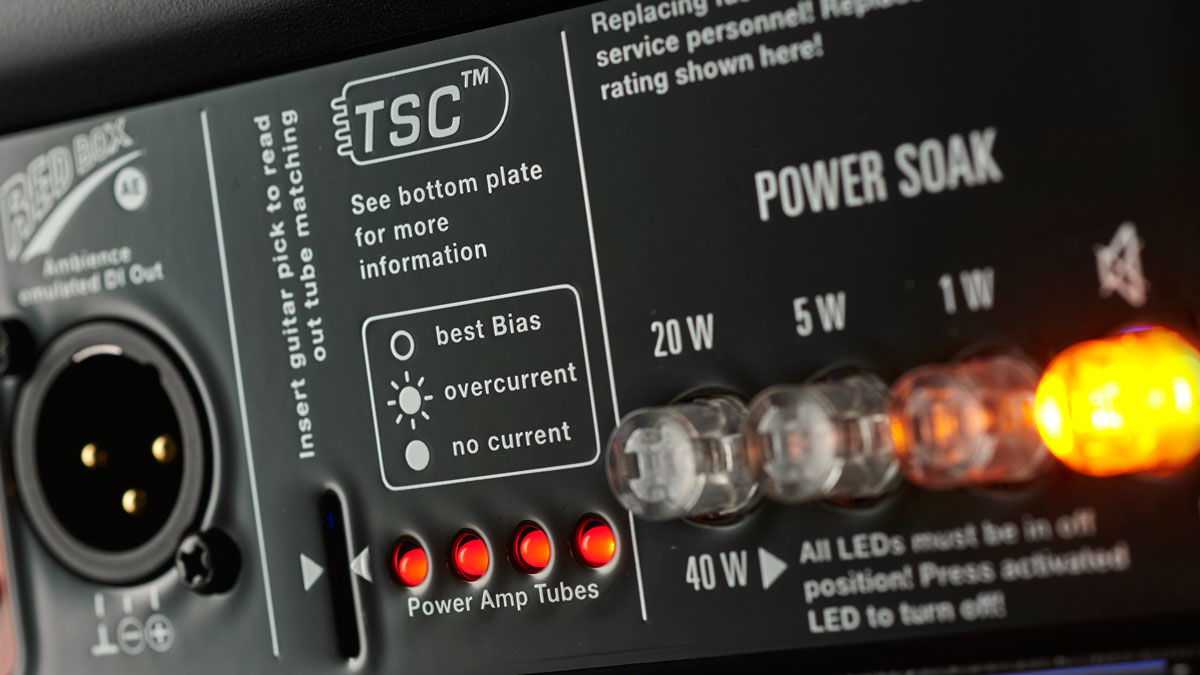
Specifications
Reasons to buy
Reasons to avoid
The GrandMeister Deluxe refines the German firm's best-selling compact head, with four flexible channels and a host of built-in effects. Just about everything is MIDI-powered, so you can edit and store presets to your heart's content. The rear panel includes the latest Red Box recording output, and there's also a new improved iPad app that you can use to edit and store presets, either at the end of a lead or using a wireless MIDI adaptor. The GrandMeister Deluxe 40's four channels sound quite different from those of its predecessor: they're more balanced, with slightly less treble emphasis and a smoother but no less powerful bass response. There's plenty of headroom on the clean channel, which dovetails seamlessly with the higher-gain crunch channel. Both clean and crunch are very tweed-influenced, dominated by a warm midrange that's equally flattering to humbuckers and single coils, especially when boosted and laced with a little of the GrandMeister's digital reverb, which can be combined to taste with delay, chorus, flanger, phaser or tremolo. The two American-voiced lead channels have all the gain you could possibly need for almost any musical genre, from classic rock to modern drop-tuned metal, with a nicely sculpted top-end that squeals and snarls on demand. As a do-it-all tool the GrandMeister 40 takes some beating. All of its many features work efficiently and it's hard to point the finger at shortcomings, because there really aren't any.
Read the full Hughes & Kettner GrandMeister Deluxe 40 review
Best high-end guitar amps: Buying advice
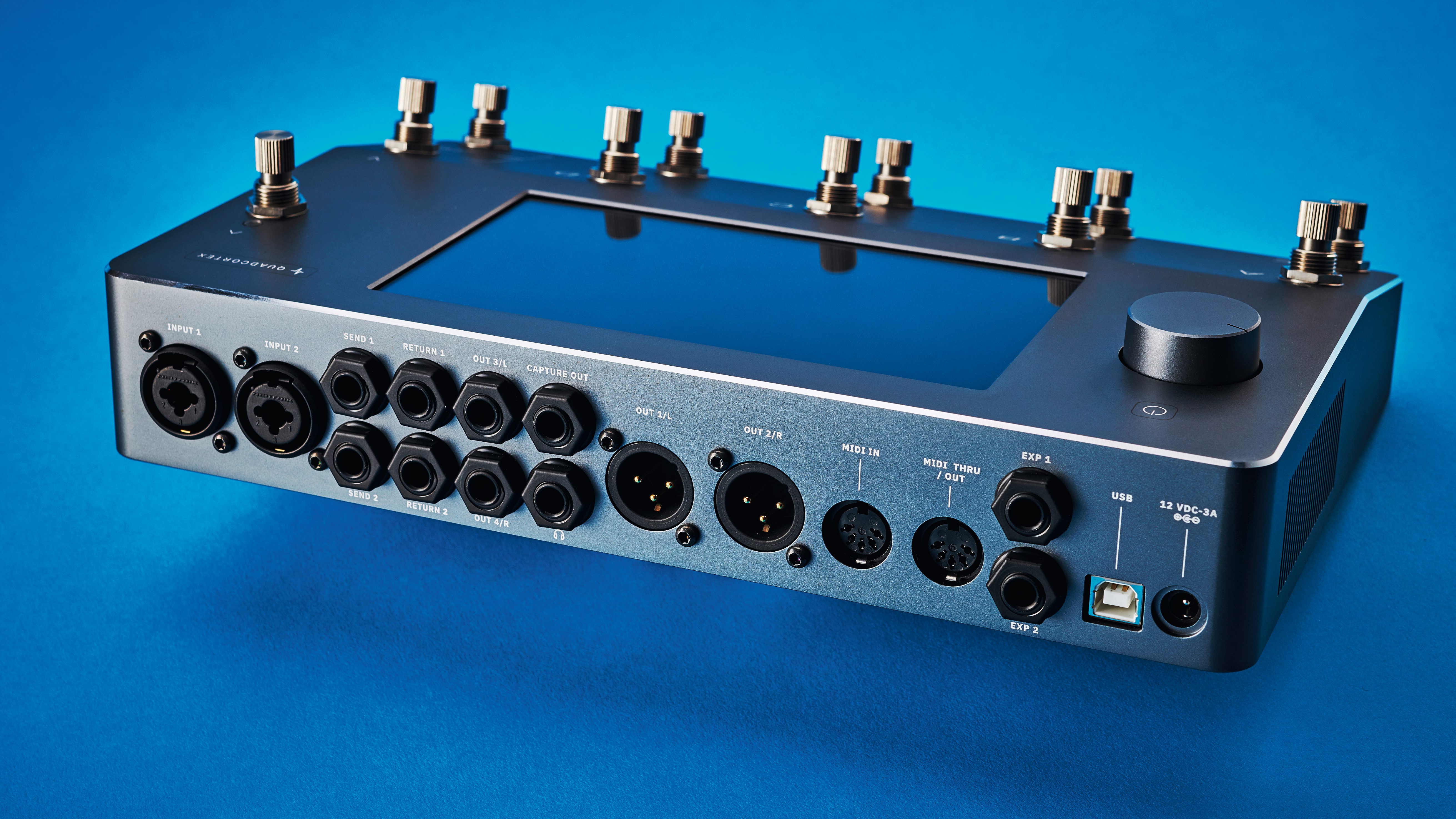
What you should know before buying a high-end guitar amp
MusicRadar's got your back
Making sure your guitar amp is right for you - especially when you're spending big money in the 'high-end' category - is crucial if you want to take your tone and your playing to the next level. As you're probably fully aware, there's a vast, impressive range of high-end guitar amps out there for you to own - but you need to know which type, style, sound and brand does it for you.
Tube amps vs amp modellers
The 'tube vs digital' argument is one that will fundamentally never be won. Tube amps have their purpose and place in the world of guitar amps; for some people they might seem like the pinnacle of tone - but for some people, it's time to move on from the analogue age into the digital one with an amp modeller. But why?
Many players still opt to use or buy a tube amp whenever possible. This is because, as your tone is influenced by analogue vacuum tubes, its characteristics are deemed to be the most natural sounding - which is a reasonable argument to make. As you turn up a tube amp and the tubes warm up, you'll achieve some tasteful, gorgeous sounding breakup and overdrive, as well as loads of natural compression. It's something which people try their hardest to replicate digitally - and the vast majority of the time, they don't get anywhere near.
That being said, digital amp modelling and profiling technology has come on leaps and bounds in a reasonably short space of time. If you need something portable with hundreds of vastly different tones in it, then there is definitely something in this guide which will do just that - but it's worth noting that, nine times out of ten, a digital amp modeller is modelling a tube amp. If you don't need the portability and convenience, and money's no object, then we'd go for a tube amp every time.
Solid state amps are very rarely considered among the best high-end guitar amps due to their transparency. It's not that they sound bad - if anything, they take on the sound of whatever you put through them - but they don't quite have the individualistic personality of a tube amp, or the convenience of a digital modelling unit.
Head vs combo
When buying a new amp, you'll also need to think about whether you want a head or combo.
For those who're unaware, a combo amp is where every single part of your amplifier, including the speaker, is all in the same enclosure. This is perfect for people who want to save space either in their home studios or on stage by having an all-in-one setup.
A head & cab setup is when your amplifier section is separate from the speaker. This can be a really convenient and useful setup for those who play gigs or jam often, as most venues and practice rooms will have house cabs already. This means you can just turn up with your head, guitar and some pedals, and crack on.
Which brands make the best high-end guitar amps?
With guitar amps - and especially high-end guitar amps - the beauty of them is that they all have many different characteristics. Some brands produce amps which make the same tone in different ways, and some amp brands make amps which kick out an iconic tone which nobody can imitate. It all depends on what you're after.
For you clean-playing folk, Victory, Fender and Supro are all brands which will cater for you kindly. Fender amps are probably the go-to for cleans, and are great pedal platforms too. The Victory V40 we've included in this guide also brings that slightly mid-scooped Fender vibe to the party, but with a little more bite, grit and clarity. Supro is a killer brand which was used heavily by the likes of Jimmy Page, and offers a slightly more mid-heavy, 'British' sound to the mix.
Mesa/Boogie, EVH and Hughes & Kettner has the metal tones covered if you want to be totally tubular, but with more and more metalheads opting for digital amp modellers made by Neural DSP, Kemper and Fractal Audio, these brands are also worth considering. Neural DSP and Kemper especially are capable of a lot more too - so don't discount those brands if metal tones aren't your thing.
For those classic tones, Marshall and Orange are your friends, as always. They're all analogue, all-tube and always a pleasure to play and to hear. There are few things better than hearing a cranked Marshall or Orange amp.
Find out more about how we test music gear and services at MusicRadar.
Related buying guides
- These are the best electric guitars
- Plug in to one of the best guitar amps under $/£1,000
- On a budget? These are the best guitar amps under $500/£500
- Take a look at the best guitar amps
- Unplug and relax with one of the best high-end acoustic guitars
- Dive deep with the best baritone guitars
- For something a bit less in-your-face: the best small guitar amps
Get the MusicRadar Newsletter
Want all the hottest music and gear news, reviews, deals, features and more, direct to your inbox? Sign up here.
James is a freelance writer and former Junior Deals Writer at MusicRadar. Before writing, James worked as a guitar salesman at a local music store, so he knows a thing or two about matching people with their perfect instruments. James also has experience working in other areas of the music trade, having worked for the online music distributor, RouteNote. James is a guitarist, bassist and drummer and has also toured the UK and Europe with his old band Hypophora.
“It’s honestly got me thinking hard about adding one to my own studio set up”: Two Notes Reload II review
“I’m beyond excited to introduce the next evolution of the MT15”: PRS announces refresh of tube amp lineup with the all-new Archon Classic and a high-gain power-up for the Mark Tremonti lunchbox head
